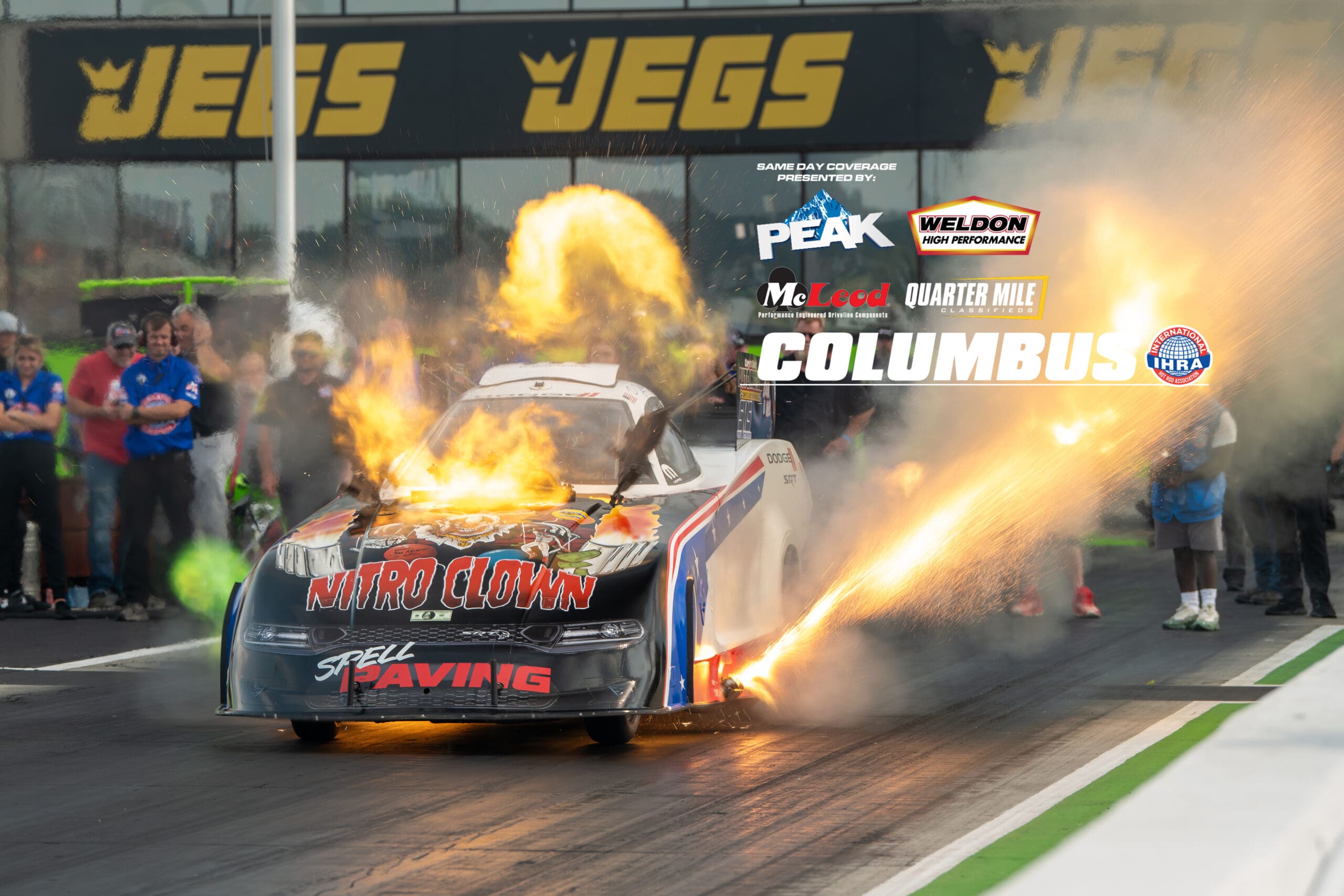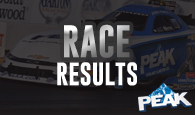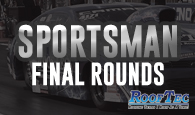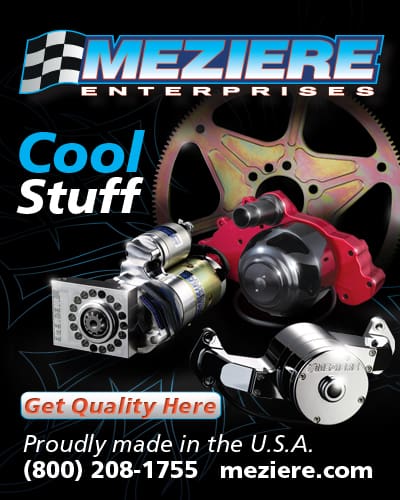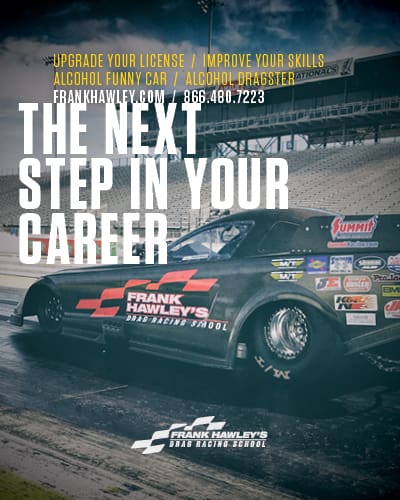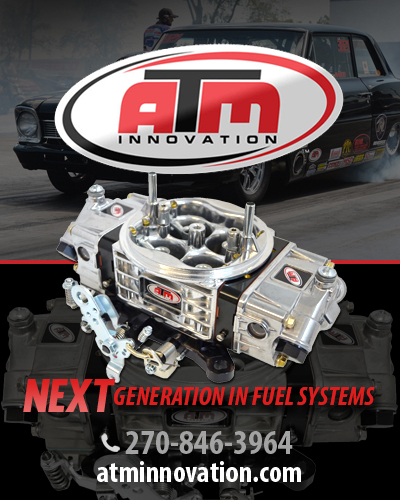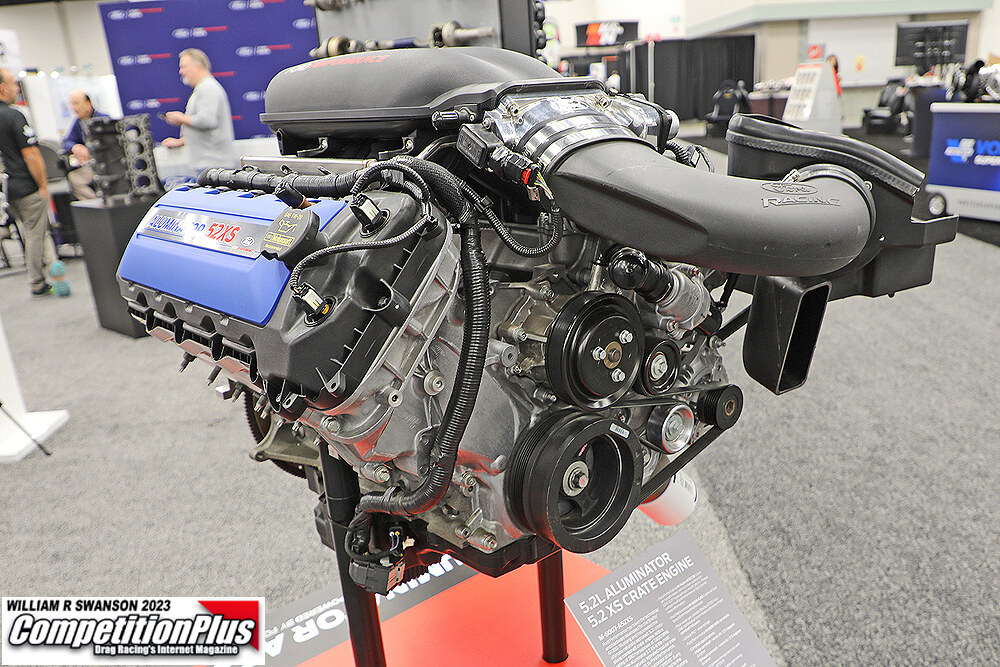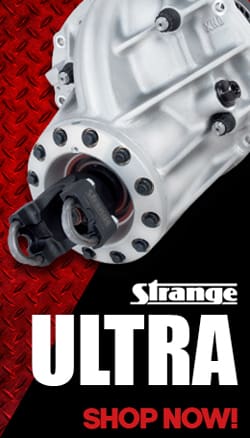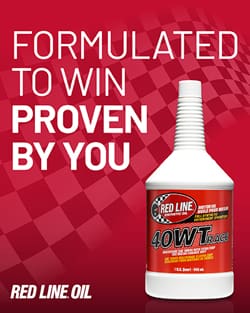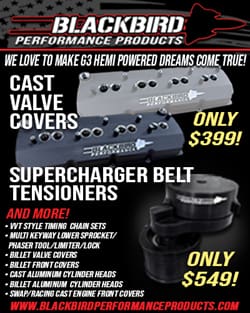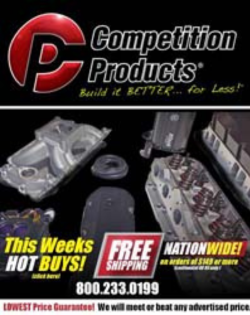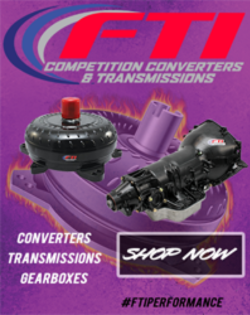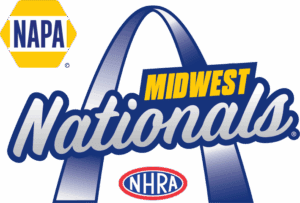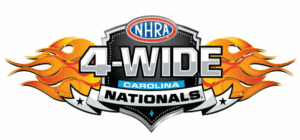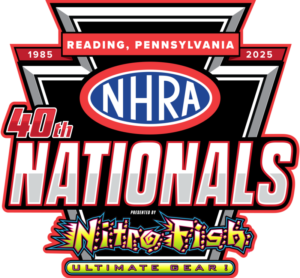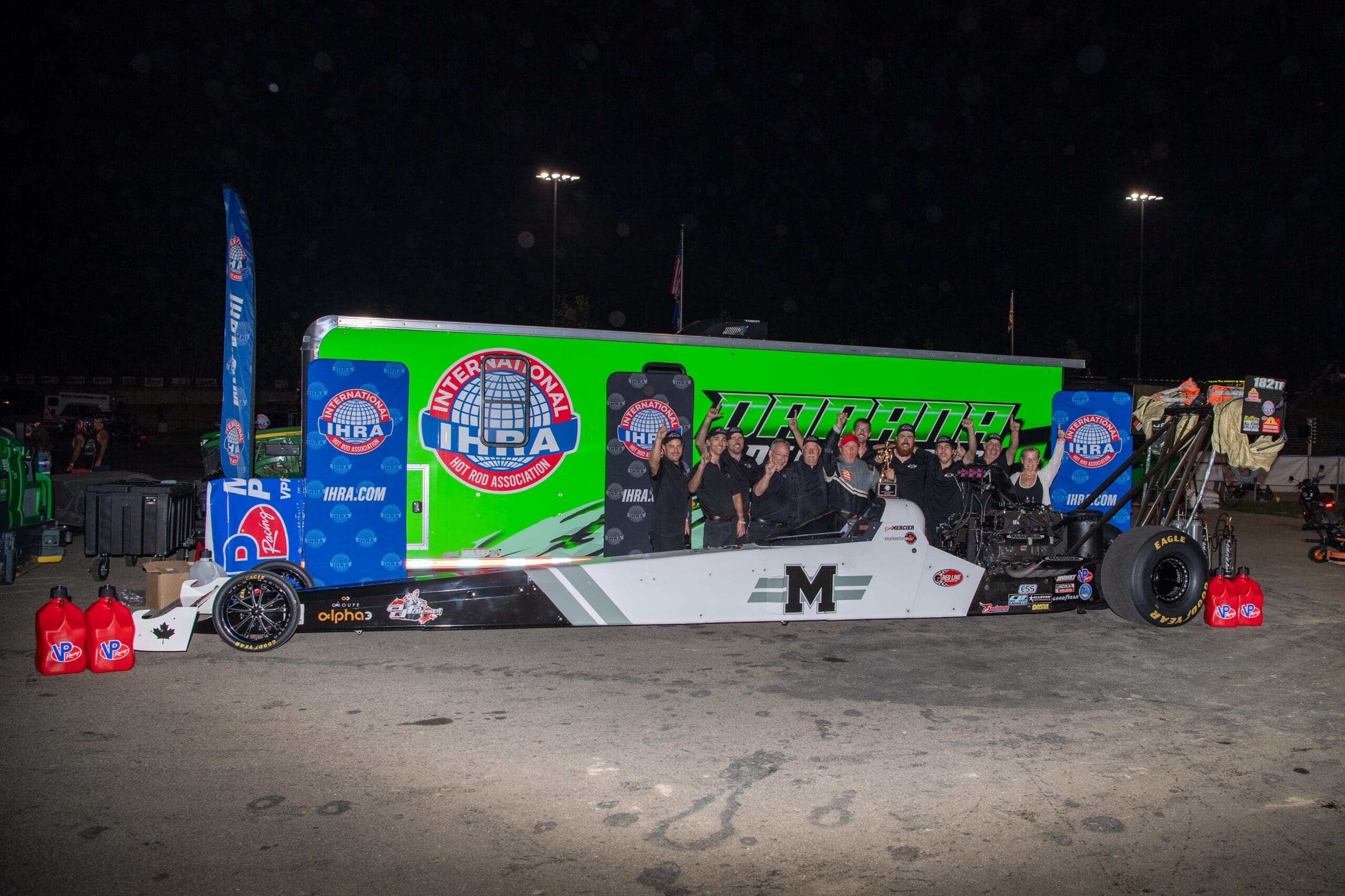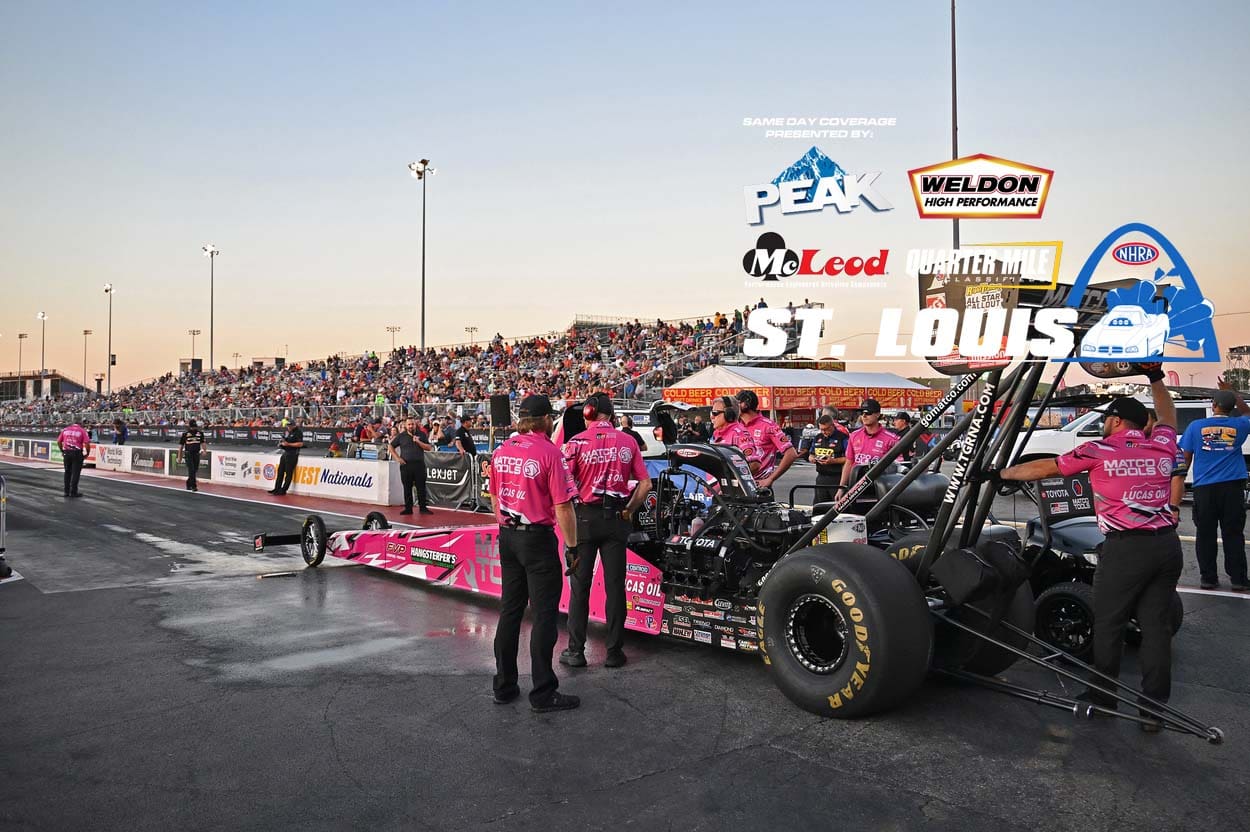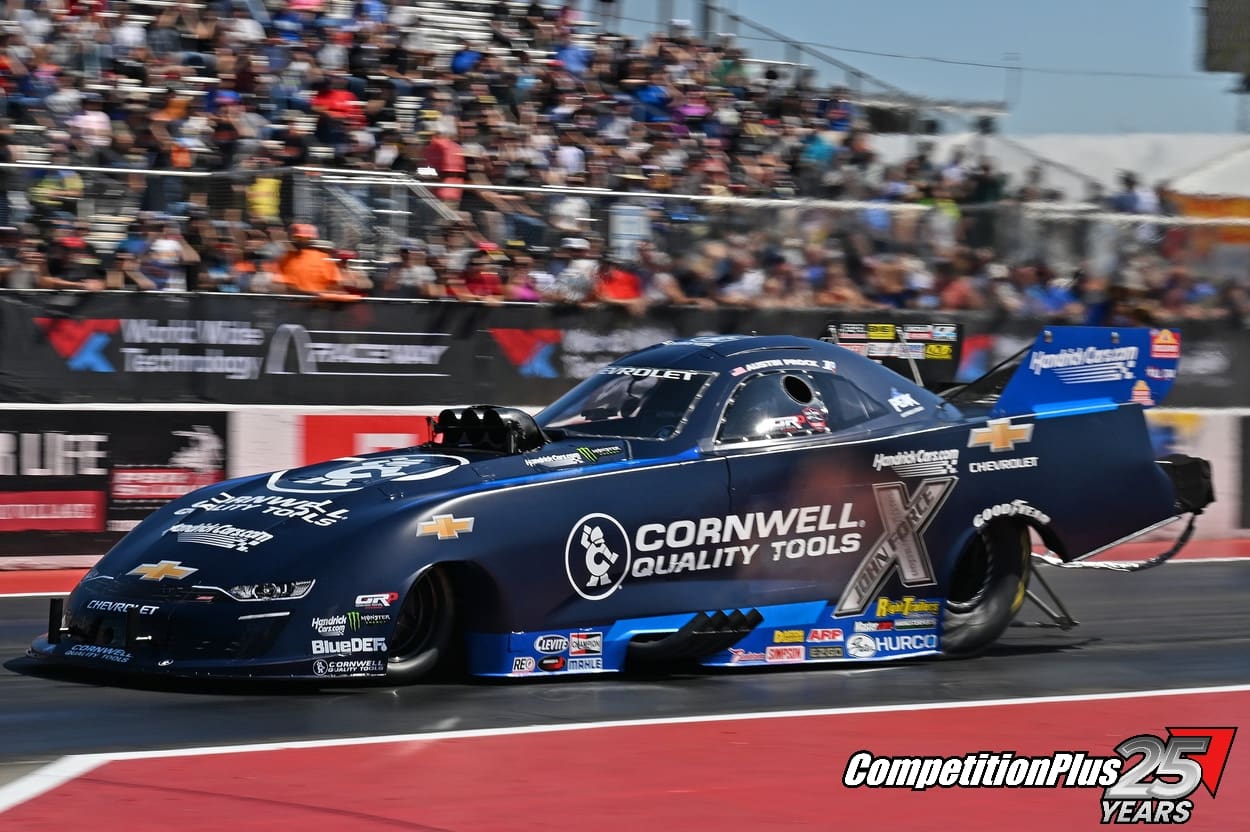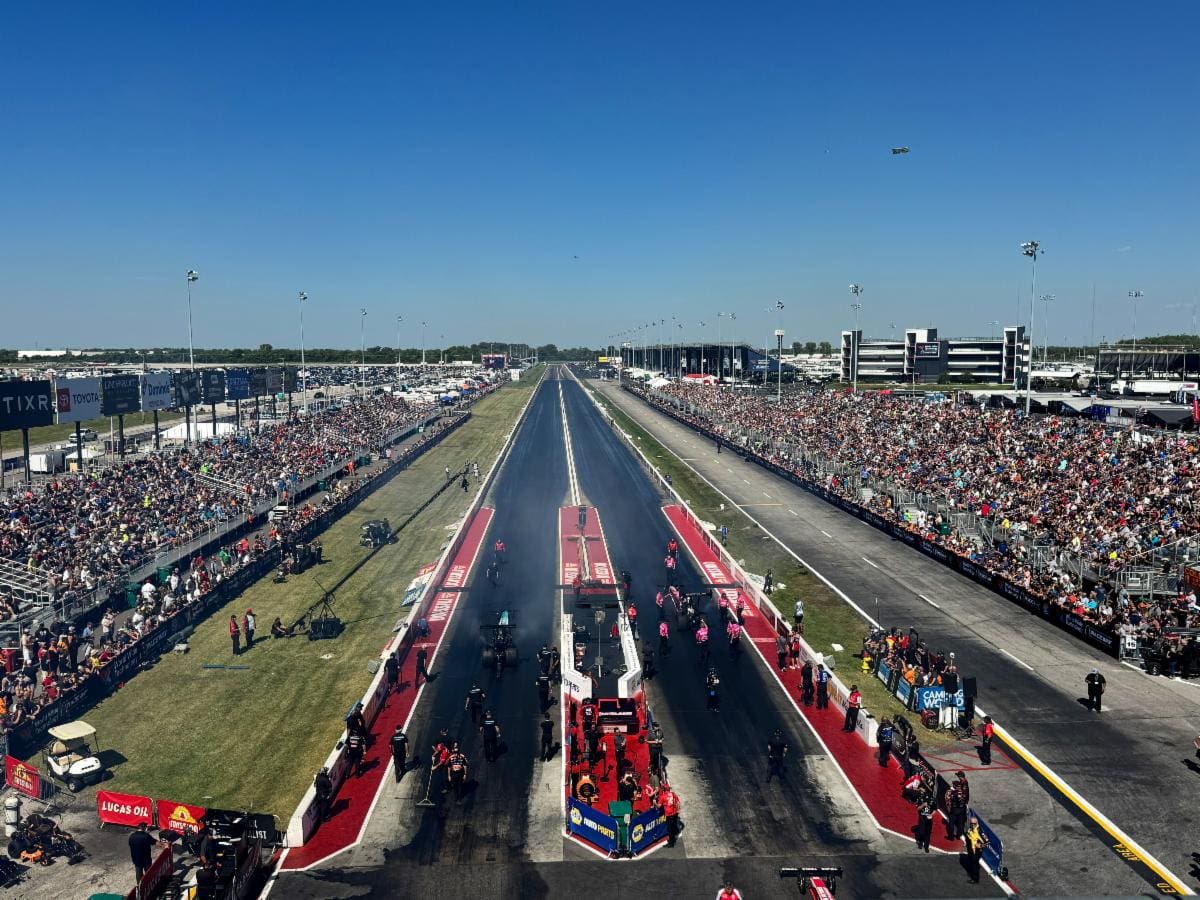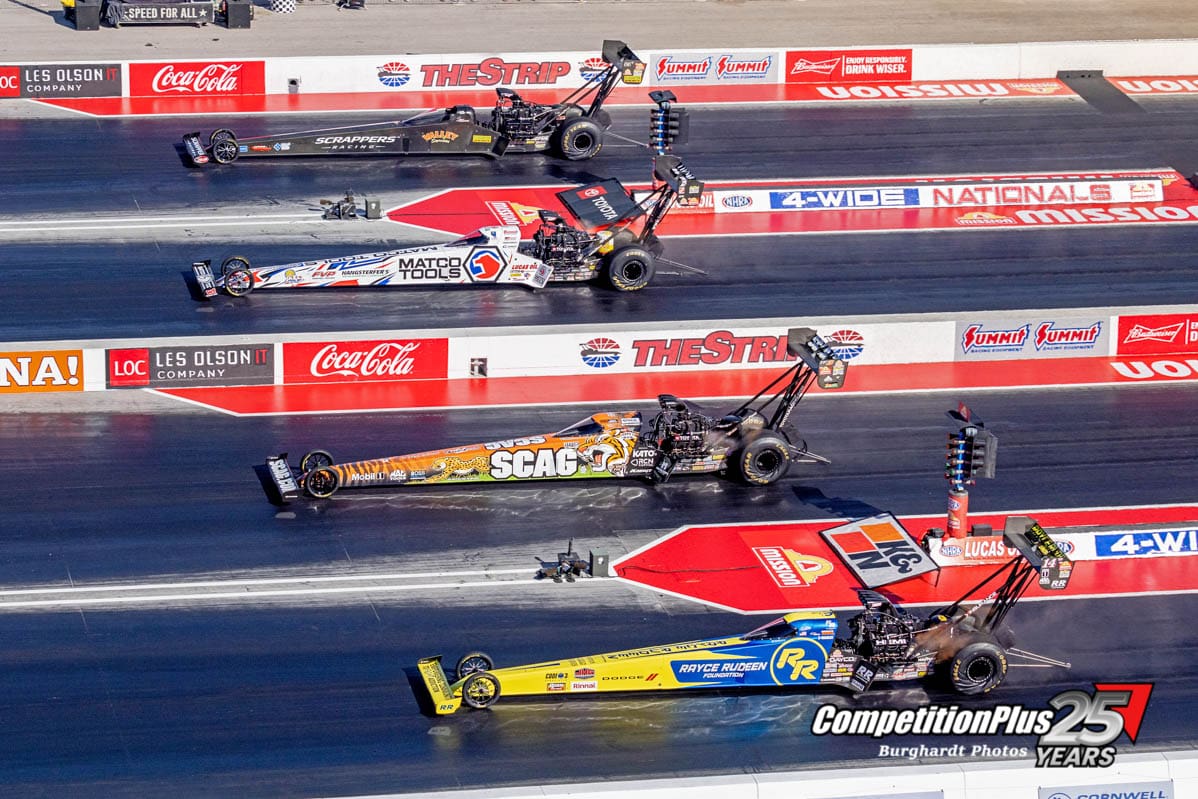by Bobby Bennett, Allie Hartman; Photos by Robert Richard
FINAL NOTEBOOK – WINNERS ARE CROWNED IN THRILLING FOURTH STOP ON IHRA’S REJUVENATED TOUR
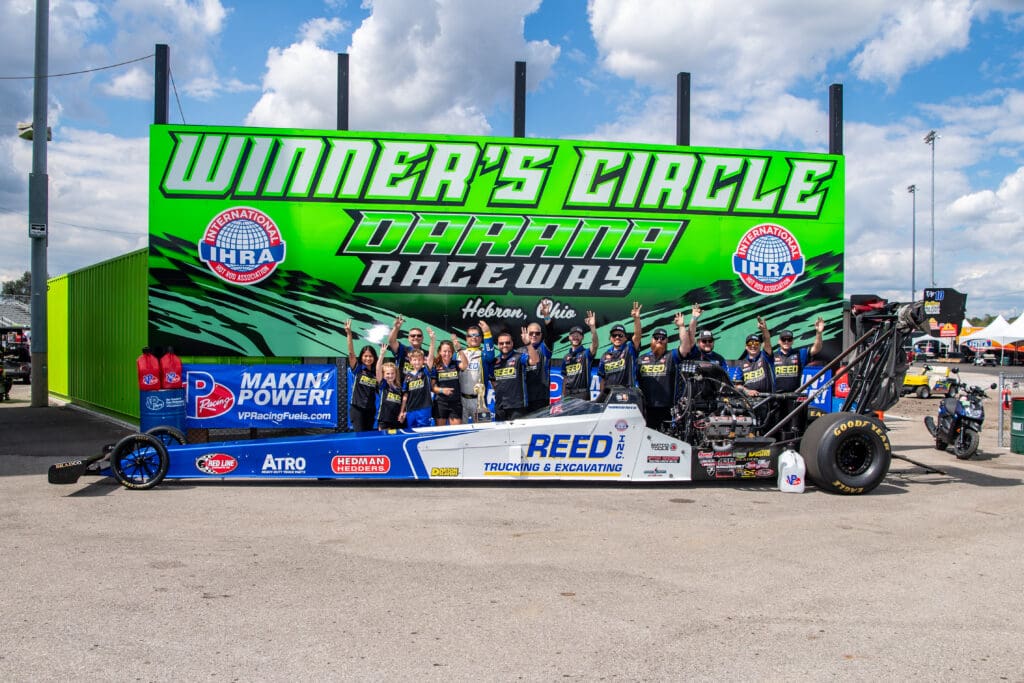
1 – ALL HAIL THE THREE-FINGER GLOVE – Shawn Reed made a statement in Top Fuel at Darana Raceway, winning his first race back after a life-changing accident less than two months ago. Reed covered the distance in 3.819 seconds at 327.75 mph to defeat Larry Dixon’s 3.855 at 319.83 in a close final.
Reed’s crash in Seattle resulted in the loss of a finger along with multiple hand and body injuries. His return at this IHRA event was intended as a test to see what driving would be like following recovery, but the win may influence him to enter more events in the future.
“I came into this sport just trying to run the NHRA, and you know, the IHRA kind of popped up on the schedule really to test my hand,” Reed said. “But I think I’ll be back to do some of these. NHRA is where my sponsors and stuff are, but I had a great time here at the IHRA. I mean, they treat you really well, and yeah, I’m looking forward to coming back.”
The win capped a long recovery stretch, and Reed credited his crew for getting him back on track.
“I mean, we went to Bradenton at the beginning of the year, and it’s been a long road testing some parts, and crashing the car in Seattle, and all the stuff that we’ve just been through,” Reed said. “So good job to (Rob) Wendland and all the guys that just got us down that right lane, and with a really great number too. So yeah, pretty proud of everybody.”
Reed also thanked the sponsors who stood by him during the downtime.
“I want to just thank everybody again,” he said. “ATRO came out here on Friday on the test, and he signed up for next year and gave us a little bit more cash, and really happy about them. Red Line Oil, man. Couldn’t be anywhere without Mark Beatty and Red Line Oil. Love that guy. Star Racer Belt, my crew chief’s company, Lincoln Welders. I mean, they’re doing great things for us as well, not only in our race car team, but also helping my company out back in Washington state. So Lincoln Welders, just great to have them on too with us. So yeah, I was hoping to pick up a few more sponsors for next year in 2026, but we’ll just keep going, pushing away.”
Reed said the test weekend proved he is ready for the rest of the season.
“It hurts a little bit, and it’s hard to get the gloves on and off, but it’s tolerable and manageable,” he said. “Hand injuries, from what I heard, are just you can’t do much about them. You can’t ice them. You can’t heat them. You can’t do anything. They just kind of heal after time. So it’s a great test. I managed to carve five passes, and we’ll go on to Reading, and we’ll try to move up in the countdown over there in the NHRA. But again, IHRA, man, badass. I really appreciate those guys and everything they’ve done for us. Pit spot’s beautiful. The food’s great. Just really appreciative of all the guys coming over and thanking me for coming out here.”
While sidelined, Jordan Vandergriff filled the driver’s seat, a situation Reed admitted was tough to watch.
“Yeah, that was terrible,” Reed said. “I mean, one day, I might want to be an owner and bring somebody up, and just not my time yet. I’m not washed up yet, so we’re good.”
Reed will return to action next weekend at Maple Grove Raceway with a busy stretch of racing ahead.
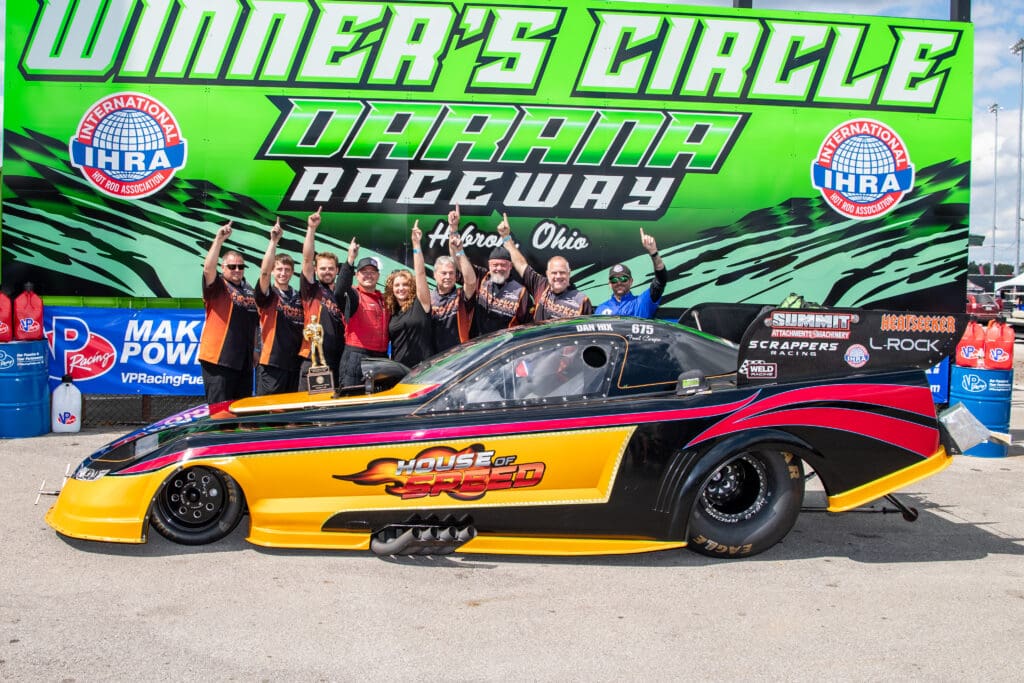
2 – FAMILY AT THE CENTER OF IT ALL – Dan Hix secured the Funny Car title Sunday at the IHRA Outlaw Nitro Series event at Darana Raceway in Hebron, Ohio, in a rematch of the Milan final just a few weeks ago. Hix posted a winning run of 4.329 seconds at 295.86 mph to stop Del Worsham, who defeated him in their last meeting. Worsham clocked a 4.535 at 196.42 mph after smoking the tires near half track.
The victory, Hix admitted, came as a surprise. “I’m just kind of at a loss for words. I can’t believe it happened,” Hix said. “I actually did not think I got the win. I thought he shut it off at the finish line, but he just got squirrely, and I went ripping by him and down there.”
Initially unsure of the outcome, Hix said it only began to register when event staff flagged him over for the winner’s interview. “I asked them, ‘Did I win?’ I did,” Hix said with a smile. “That’s when it kind of set in a little bit, but it still ain’t set in completely.”
The car Hix drove to victory isn’t a high-budget build, which made the accomplishment even more meaningful. “Everybody needs to know that’s a single mag, small fuel pump car is why we’re not running 4-0’s, but we’re sure making the most of what we got and we’re going down the racetrack,” Hix said. “It’s a family and friends effort to the tee. I mean, me and my wife and kids do everything together, and we work our butts off.”
The weekend wasn’t without setbacks. A mechanical issue during a burnout Saturday nearly sidelined the team. “When I stepped on the throttle, it spit the throttle stop off and revved at 10,200 RPMs in the burnout,” Hix said. “I caught it as fast as I could, but luckily it didn’t blow the thing up right there.”
The team replaced parts overnight and returned Sunday for a strong showing. The event also doubled as a reunion with longtime friends and coincided with a family milestone. “Clinton and Ross joined in for this weekend, and these are people I’ve known since I was a little kid,” Hix said. “It was kind of a little reunion gathering at the racetrack. Yesterday was my dad’s birthday, so I was happy to get to celebrate his birthday with a win today. Yeah, we’re going to do a little celebrating.”
Hix converted the car from a fuel altered to a Funny Car setup after an earlier event was canceled. “We thought, you know what? Let’s go home and get that funny car body out of the rafters,” Hix said. “From that day on we worked mega, mega hours.”
He credited veteran support for helping get the car on track. “Dom Lagana helped get us off on the right foot with the tune-up and we’re taking it from there,” Hix said. “Me and my boys are doing the tuning, and we’re creeping our way towards knowing what we’re doing.”
Hix also stressed the importance of racing smart and acknowledged IHRA owner Darryl Cuttell for providing opportunities.
“Without him doing this, my car is probably sitting idle or I’m off doing some match racing,” Hix said. “These things run on dollars and you got to keep your nose clean or you run your wallet over real quick.”
“Just a great day at the races,” Hix said. “One of the best ever.”
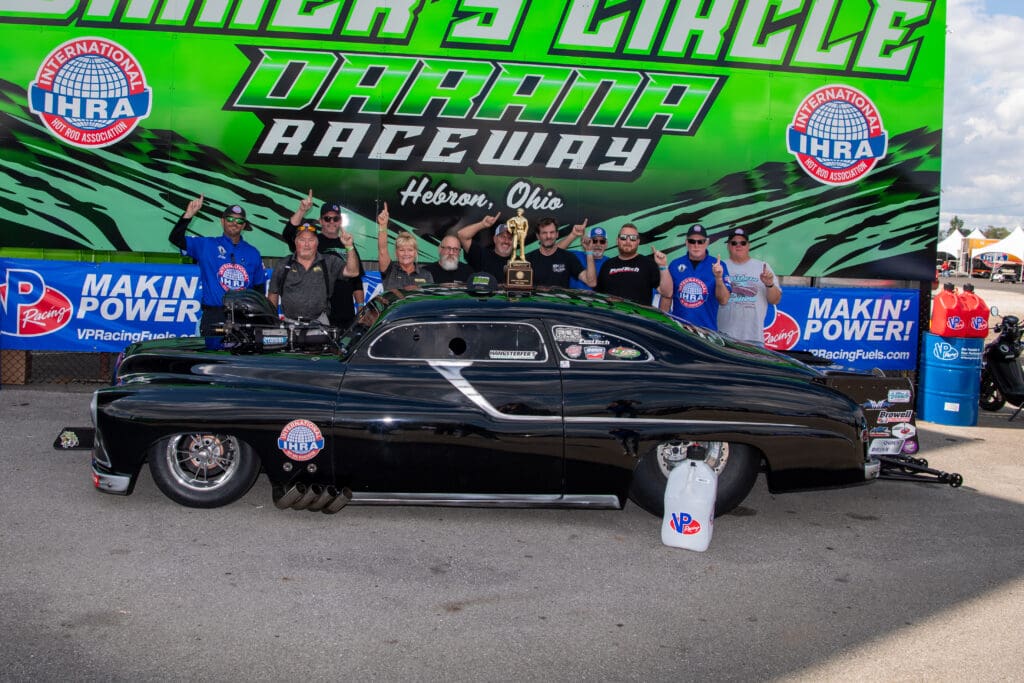
4 – POWERS CONTINUES TO POWER ON – Chris Powers claimed another Ironman trophy Sunday after winning the Mountain Motor Pro Stock final at Darana Raceway in Hebron, Ohio. The No. 2 qualifier defeated Jordan Ensslin with a 4.059-second run at 176.47 mph to Ensslin’s 4.080 at 175.78.
Powers entered the round battling mechanical issues, including a damaged transmission and a loose shifter. “Yeah, the round before, we broke the tranny and stuff, so we had to get the motor and stuff fixed to get back up here quick,” Powers said. “And the shifter was loose. When I went to do the burnout, about fell into my hand.”
Despite the problems, Powers focused on execution and leaned on his crew’s preparation. “It was already a stressful moment, but I just kind of relaxed and just knew I just had to do a good job,” he said. “Ensslin’s a good driver, he caught a light. I’m happy for the Sonny Power and Chuck Samuel tuning, because this thing was on fire once we got into eliminations.”
The victory added to an already strong season for Powers, who has been among the most consistent drivers in the class. “This is our 15th race of the season and our fourth win and our seventh final,” he said. “So we’re really happy. We’ve been doing a good job this year, working hard.”
Powers credited focus and composure as keys to his success. “You just got to block out all the noise and just try to do a good job,” he said. “Don’t let anybody get in your head and just stay focused the whole time. And that’s what we’ve been doing.”
The Pennsylvania driver said he plans to keep adding to his growing collection of trophies. “We’re just stocking them on the shelf at home. Just adding it to the rest of them we got,” Powers said. “And hopefully we can get another one here, a couple more this year they got, and see if we can finish it out on top. Just thanks to Sonny and wish he was here with us, but I’m glad for all the folks at their shop tuning these motors up and getting them done. So we’re taking this one back to Pennsylvania again.”

4 – POWERS CONTINUES TO POWER ON – Chris Powers claimed another Ironman trophy Sunday after winning the Mountain Motor Pro Stock final at Darana Raceway in Hebron, Ohio. The No. 2 qualifier defeated Jordan Ensslin with a 4.059-second run at 176.47 mph to Ensslin’s 4.080 at 175.78.
Powers entered the round battling mechanical issues, including a damaged transmission and a loose shifter. “Yeah, the round before, we broke the tranny and stuff, so we had to get the motor and stuff fixed to get back up here quick,” Powers said. “And the shifter was loose. When I went to do the burnout, about fell into my hand.”
Despite the problems, Powers focused on execution and leaned on his crew’s preparation. “It was already a stressful moment, but I just kind of relaxed and just knew I just had to do a good job,” he said. “Ensslin’s a good driver, he caught a light. I’m happy for the Sonny Power and Chuck Samuel tuning, because this thing was on fire once we got into eliminations.”
The victory added to an already strong season for Powers, who has been among the most consistent drivers in the class. “This is our 15th race of the season and our fourth win and our seventh final,” he said. “So we’re really happy. We’ve been doing a good job this year, working hard.”
Powers credited focus and composure as keys to his success. “You just got to block out all the noise and just try to do a good job,” he said. “Don’t let anybody get in your head and just stay focused the whole time. And that’s what we’ve been doing.”
The Pennsylvania driver said he plans to keep adding to his growing collection of trophies. “We’re just stocking them on the shelf at home. Just adding it to the rest of them we got,” Powers said. “And hopefully we can get another one here, a couple more this year they got, and see if we can finish it out on top. Just thanks to Sonny and wish he was here with us, but I’m glad for all the folks at their shop tuning these motors up and getting them done. So we’re taking this one back to Pennsylvania again.”
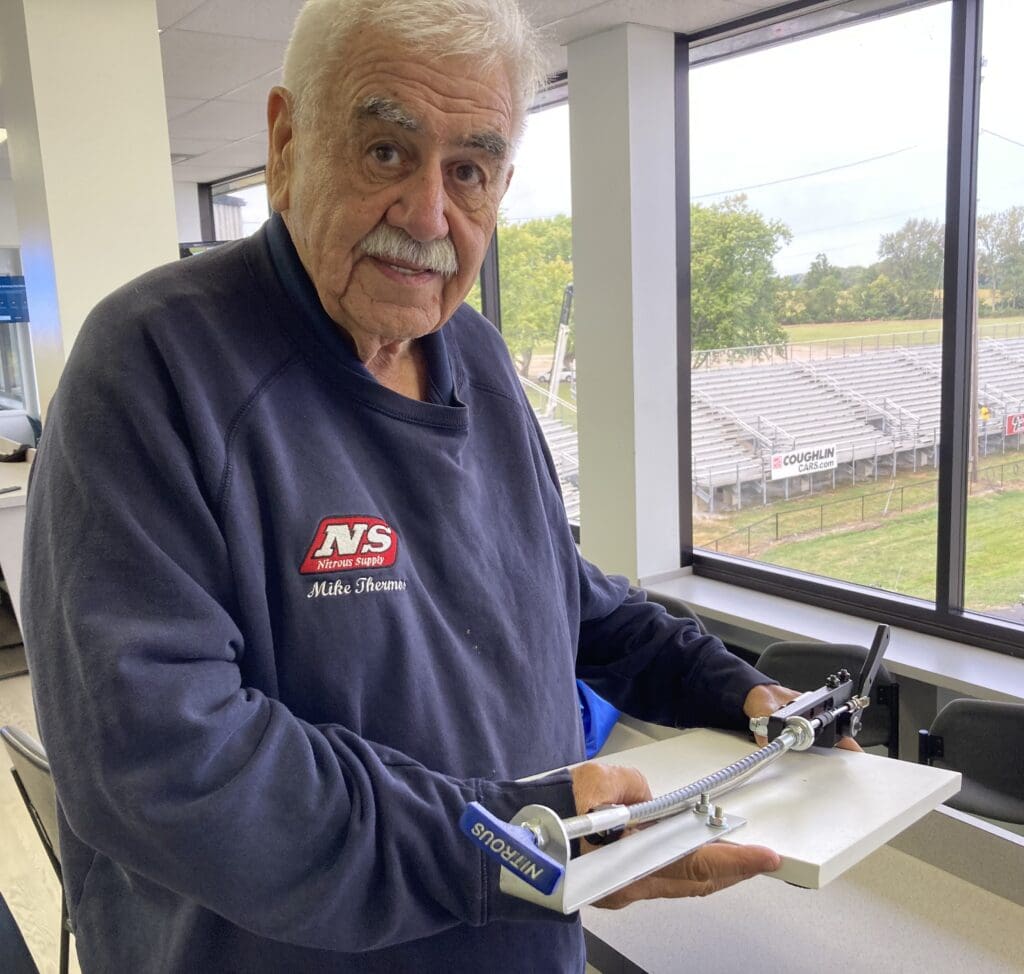
5 – NITROUS GODFATHER DELIVERS NEW SAFETY ITEM – Mike Thermos has been tied to Pro Modified since before the class had a name. The nitrous pioneer, often called one of the godfathers of the category, helped push the technology into full-bodied race cars during the 1970s and 1980s, when sanctioning bodies were still deciding how to handle the performance boost.
Thermos worked with NHRA Funny Cars before nitrous was banned from fuel categories, eventually moving into IHRA’s Top Sportsman and Quick Eight programs. Those series became the foundation of Pro Modified, where Thermos’ products were a fixture. His career has been defined not only by speed but by a consistent focus on safety.
That commitment has led to his latest development through his Huntington Beach, Calif.-based company, Nitrous Supply. The new Inline Safety Valve is designed to shut off nitrous flow quickly in the event of an accident. A lever inside the cockpit gives the driver direct control, while a secondary handle mounted outside the car allows crew members or safety staff to cut flow immediately if the driver is unable to act.
“Well, the purpose is for safety,” Thermos said. “I mean, we’ve been seeing some things happen in nitrous and it doesn’t make sense because it’s so simple to cure it.”
Fires fed by nitrous are notoriously difficult to extinguish. Thermos said the high pressure of nitrous oxide can overwhelm standard fire suppression.
“The problem comes from you can’t put the fire out with a fire extinguisher because the nitrous is coming out with 900 PSI and it blows all the fire extinguisher chemical away and the fire continues to burn,” he said.
Thermos has spent decades teaching racers that nitrous is powerful but volatile if handled improperly.
“It’s an oxidizer and you got pressures to deal with in the approximately 1000 PSI,” he said. “So you can’t just use regular hose like you do for fuel and stuff. You have to have aircraft quality, I mean 3000 PSI hoses when you build a nitrous kit, otherwise you’re going to get in trouble.”
Some sanctioning groups have already begun requiring external shutoff handles like those offered with Thermos’ new valve. For him, the move is part of a natural progression that balances the performance potential of nitrous with responsibility to the drivers using it.
“It doesn’t make sense to keep seeing the same problems when the fix is right there,” Thermos said. “If we can make it safer for racers, then that’s what we need to do.”

5B – THE TRICKSTER ADDS A FOURTH CATEGORY – Doorslammer drag racing icon Rickie Smith did something no other professional drag racer has done. He won in his third pro category on Sunday stopping Tim Molnar in the finals of the Pro Nitrous division.
Smith adds Pro Nitrous to his resume after having won in Super Modified, a sportsman category in the 1970s where he raced a Jack Roush-powered Ford Maverick before moving over to Mountain Motor Pro Stock where he won five titles and became the first driver run a 7-second run in 1980 and then the first 200 mile per hour Pro Stock driver in 1991.
Smith entered eliminations as the No. 1 qualifier and beat Jackie Slone Jr., and had a bye run into the final round.
Smith said he’s excited to be back with the IHRA, the series where he first became a professional drag racer in 1979 and a world champion in 1976 as a sportsman racer and later in 1982 as a professional racer.
Smith has seen a lot transpire at the IHRA days, but the King, NC-drag racer never never figured he’s see three versions of Pro Modified in competition at the IHRA. He won his first IHRA Pro Modified race at the 1997 IHRA Spring Nationals in Bristol, Tenn.
Up until that time, Smith was a dyed-in-the-wool Pro Stock racer. But, immediately fell in love with the class and it gained his immense respect while others hated it. Then again, Smith was always a black sheep of the family.
“I was a Pro Stock guy,: Smith said. “I won five championships in IHRA, and two sportsmen. But the Pro Stock thing got out of hand money-wise, and the nitrous thing come along and they said, ‘It’s a faster car, it’s a meaner car.”
“I said, ‘Let me have it.”
5C – AND THE OUTLAW PRO MOD WINNER IS – Outlaw Pro Modified racer Brandon Pesz ran the table over the weekend in the inaugural event for the Outlaw Pro Modified division. Starting from the No. 1 position, he beat Billy Banaka in the final round.
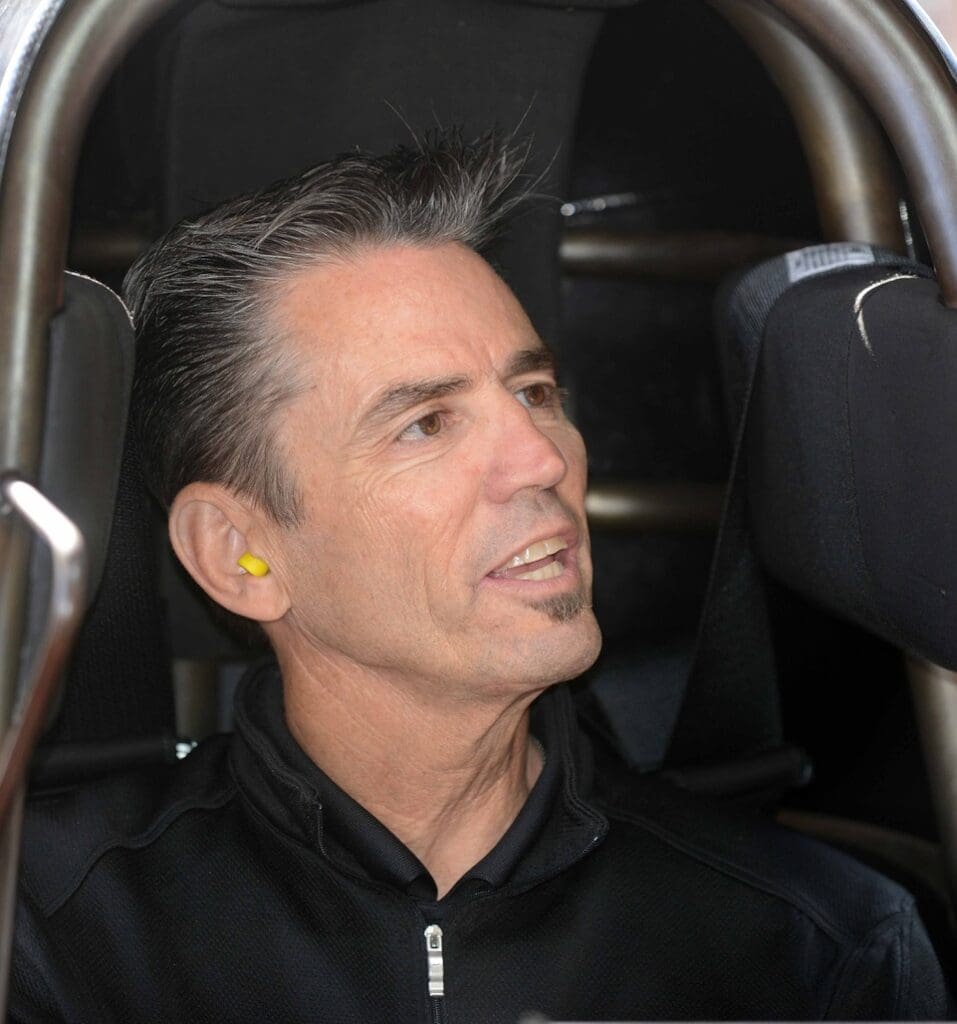
6 – DIXON SWIMS WITH THE SHARKS AGAIN – The name Larry Dixon has been recognizable in Top Fuel for three decades, but he had not raced on U.S. soil in eight years until this weekend. The three-time NHRA Top Fuel world champion returned to competition at Darana Raceway, entering with both his competition car and his exhibition two-seater dragster.
Dixon, who has raced in Australia in recent seasons, said the return to American tracks felt familiar.
“I think I raced enough in Australia, you know, over the last five years that it’s not totally outside of my wheelhouse still,” Dixon said. “I don’t race a lot, but, you know, to come back to Columbus and see all the work that they’ve done at this track, I have a lot of great memories of racing here. So to come back, you know, almost 20 years later and racing a fuel car, it’s been a fun weekend so far.”
He opened the weekend by making runs in his two-seater dragster, which he was pleased to showcase.
“Just really thankful that IHRA let us run our two-seater,” Dixon said. “We ran that and ran a customer down the track yesterday with it, and they were thrilled, made a great run with it.”
The idea to bring both cars came during early conversations with IHRA officials.
“Talking to them, it was, you know, like, hey, why don’t you bring both cars? And so that’s kind of how it came about,” Dixon said. “So it was like, yeah, so we’ll bring the other car and see what we can do with it. So it’s been good. Both cars have run great so far.”
Looking toward eliminations, Dixon said his approach was simple.
“When you pull up, if you can get your car to stage, you know, you only got a 50% chance of winning, so hopefully we can see some win lights today.”
Dixon outran No. 1 qualifier Doug Foley, to score his first career IHRA round victory, and making his best run of the weekend with a 3.855 second pass.
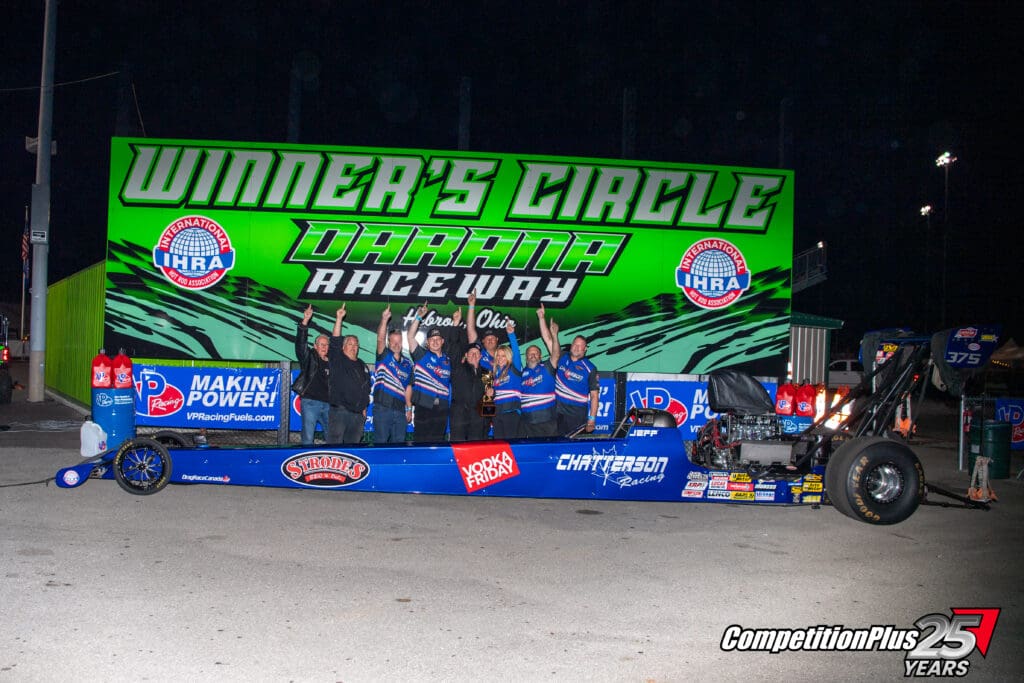
7 – IN THE BOOKS – The fourth stop on the IHRA Outlaw Nitro Series at Darana Raceway outside Columbus mirrored the season opener in July, with delays pushing Saturday’s action late into the evening. Cooler temperatures forced officials to move the completion of professional and Pro-Am rounds to Sunday morning.
The Top Alcohol classes crowned winners before the schedule change, with Jeff Chatterson capturing the dragster title and Phil Esz winning in funny car. Jason Diestsch won Factory Stock Showdown and John Jacklitch Jr. took the Outlaw Sled crown.
Chatterson edged Jared Dreher in the dragster final with a 5.437-second run at 262.85 mph. The Canadian racer earned his second career IHRA national event victory, 29 years after winning Modified Eliminator at the 1996 Empire Nationals.
“Well, I mean, we struggled the first two qualifiers, we had issues but we managed to straighten them out,” Chatterson said. “Then the first round, the car actually ran pretty good and we took it back, tweaked it a little bit. I actually thought it was going to run faster, but it didn’t. I saw Jared the whole way down and I thought, ‘Oh.’ And then I must’ve just got him right in the lights because it was like my green light came on. I’m like, ‘Holy smokes, I actually won.’”
Chatterson said the win carried the same meaning as his first Ironman.
“The first one was in Modified Eliminator back in, I think it was ’96,” he said. “It was a lot of fun back then. It’s a lot of fun now. I mean, doing it with my family and I was doing it with my family back then and, yeah, my son and my wife. Yeah. It’s all family oriented.”
Esz, who entered as the No. 1 qualifier, won the Top Alcohol Funny Car final with a 5.422-second pass at 265.33 mph, his second consecutive IHRA event title.
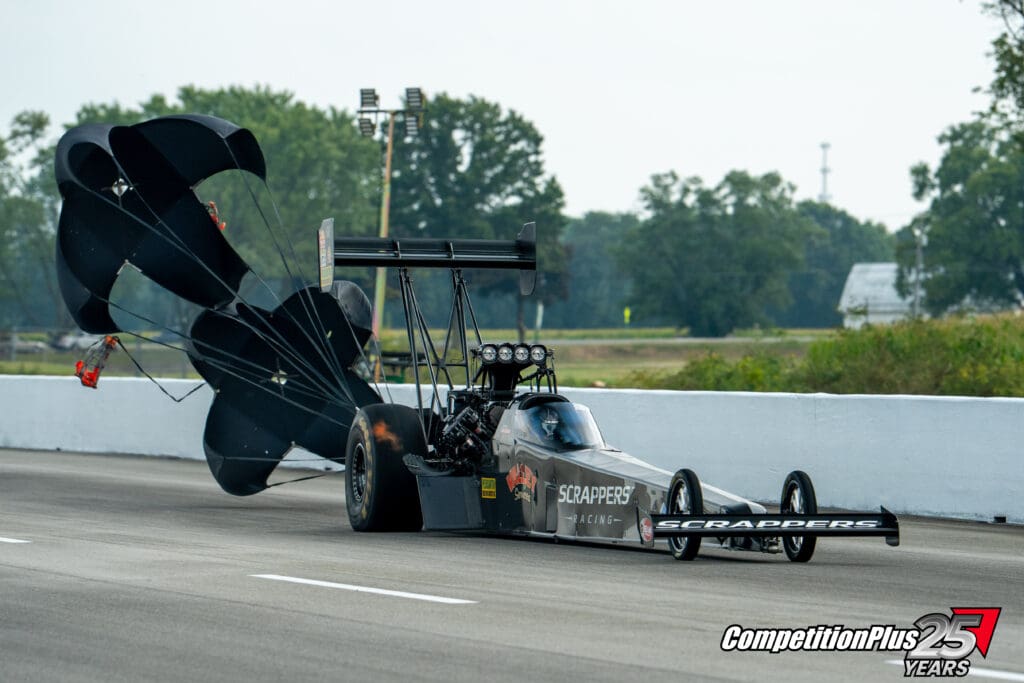
8 – GETTING STUFF DONE, JASMINE STYLE – After her first full day of racing at an IHRA event, Jasmine Salinas said she and her team are learning more about their Top Fuel car while enjoying the process. The Columbus stop marks her second consecutive weekend in the car after sitting out nearly five months.
Although using the event as a test session, Salinas still made an impact by qualifying second in Top Fuel heading into race day.
“Yesterday was really great,” Salinas said. “I’m really excited to be here trying out IHRA. It’s something that is, you know, very different. And I’m having a lot of fun being out here right now. The track was really good. First round of qualifying we ran a 3.844, which was a good solid run. We were just trying to get down. And then the night run, we were using that kind of as our, what we came here to do is use this as a test session. So there were a couple things we wanted to try in the clutch and do it during the night run and obviously, you know, it didn’t work, but we were able to learn from that, which was really useful for us as a team.”
Despite the testing focus, Salinas said she was eager to compete.
“Going in to race day today, we’re feeling pretty excited,” she said. “I mean, there’s a lot of really great cars here, like Shawn Reed out here, and Doug Foley took the number one spot. So yeah, I’m really excited.”
Many Top Fuel and Funny Car drivers have noted that IHRA events carry a more relaxed atmosphere than NHRA competition. Salinas said she has noticed the same.
“It definitely is bringing me back to like the regional race days where, you know, everyone’s a lot more relaxed, everyone’s going and having dinners and hanging out together, and it’s a lot more family feel and a lot more family-oriented, I think,” she said.
Adjusting to the slower pace, however, took effort.
“I think I definitely had to tell myself to relax a bit because I am so used to NHRA,” Salinas said. “So, you know, fast pace and you’re on a tight schedule and trying to keep up with the TV times. And then here I had to tell myself, like, it’s okay to like relax and have fun. I definitely was struggling with that the first day, and I was like, no, it’s okay. You can go back to relaxing, and you can still, you know, be serious, but then still also have fun with this. So that part’s definitely been a nice switch for me that I haven’t really experienced in a long time. So I am enjoying it.”
Salinas is new to IHRA competition but not to National Trail Raceway. She raced in the NHRA Lucas Oil Drag Racing Series’ Top Alcohol Dragster division at the track, where she earned her first class win in 2021.
Looking beyond Columbus, Salinas hopes to finish the year with additional NHRA appearances in her family’s Top Fuel car. She is also considering a split schedule in 2026.
“The rest of the season, I’m hoping to get back out and do the remaining three races for NHRA,” Salinas said. “But then we are looking to see what the 2026 schedule is with the NHRA, and then comparing that with the IHRA schedule, and yeah, I’d like to see how we can come and do some IHRA and NHRA together. I think it’d be a really good balance for our team while we are still part-time, you know, and trying to come out and race more, I think it’d be really beneficial. And I do love the energy out here.”
Salinas ran 330.88 miles per hour run to establish the fastest run in IHRA
history, topping Clay Millican’s 328.14 mile per hour run from 2007 at Maryland International Raceway. Her 3.783 elapsed time was enough to beat Mitch King on the run.
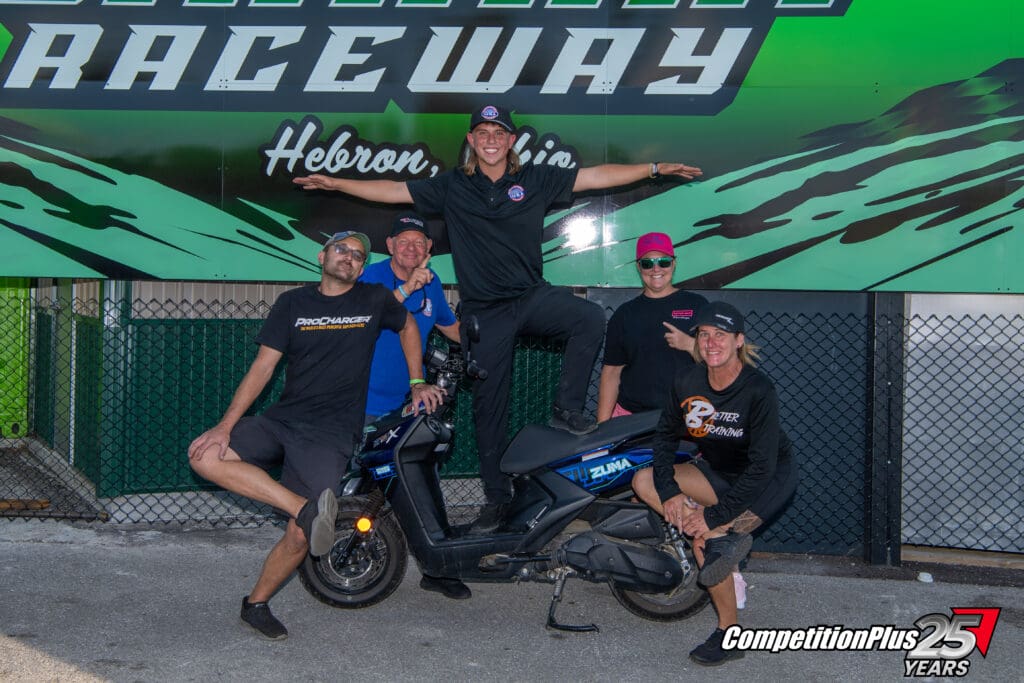
8B – A WIN IS A WIN – Robert Richard is best known for capturing drag racing through a camera lens as one of CompetitionPlus.com’s up-and-coming photographers. On Thursday in Columbus, he added a different kind of trophy to his résumé, winning the inaugural Pit Vehicle Nationals at Darana Raceway.
The event was staged after Wednesday’s schedule finished early, and it drew dozens of competitors. With golf carts, scooters and other pit vehicles lined up, officials organized a 330-foot bracket race that drew about 40 to 50 entries. Richard entered aboard a Yamaha Zuma 125 and rode consistently enough to claim the first title.
“So we finished early enough on Wednesday that the IHRA decided to have a pit vehicle race, which included all the likes of the E-Z-GO golf cart, the Yamaha Zumas, and all different kinds of pit vehicles,” Richard said. “Not smart cars, not side-by-sides, but the likes of golf carts and scooters. And it’s just a normal bracket race that we run them to the 330. There was, I’d say probably about 40 to 50 competitors in the category of the vehicle race. And we’re lucky enough that the Zuma 125 was consistent enough, and ran the number every time and turned on enough wind lights to be in the winner’s circle in the end tonight.”
Richard said his scooter never wavered from the number.
“That thing was painted at 865 from the first time I pulled in the lanes for round one to the last time I went down the racetrack,” he said. “Never took the tape off or changed the dial in.”
Asked whether the performance meant he might step into a higher-stakes bracket race with maybe a Smart Car, Richard downplayed the idea.
“I wish I was that good,” he said. “I know I was told I was about 030 in the final round. I took 030, so I feel like I could do that on a scooter. I might be able to do that in an OR car.”
Richard credited his CompetitionPlus.com colleagues for supporting his run to the winner’s circle.
“Absolutely, 100%,” he said. “They were all behind me 100% and that’s what pushed me to get to the winner circle.”
He joked that the pressure was real. “Yeah, yeah. The food is on the table. You got to win this or you’re not eating tonight,” Richard said. “So we had to win.”
Richard said he doubled entries for $40 and advanced both until round three or four, when one dropped out. He did not need a buyback and raced his way through without losing again. “Maybe if Yamaha will sponsor me some money we might be in the… if there’s ever a pit vehicle million, we’ll definitely be in that,” he said.
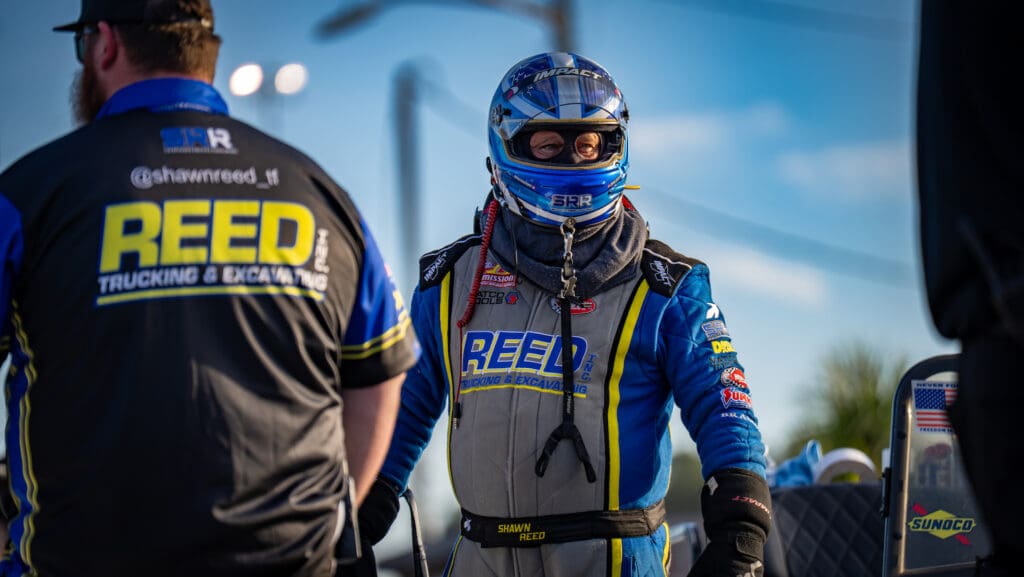
9 – THAT DIDN’T WORK THE WAY IT WAS SUPPOSED TO – Shawn Reed returned to the cockpit this weekend for the first time since his crash at the NHRA event in Seattle left him with fractured ribs, a damaged hand and the loss of his left pointer finger.
Friday’s qualifying run brought Reed a measure of relief but also a reminder of the new challenges he faces. After seven weeks out of the car, he admitted the first moments of staging stirred memories of the crash.
“It felt fast,” Reed said. “I haven’t been in the car in seven weeks, so I told everybody, everybody asked me, am I going to think about the crash? And I said no, I lied. I got in the car and did the burnout and I’m like, oh God, this is going to suck. So I’m glad to get that first one under my belt.”
“The run felt good. I didn’t have my head restraint, pulled down my chin strap, pulled down all the way. Got a little vibrated down there, but I made it through, and heck, it was pretty good pass, pretty happy.”
The run itself was clean, but Reed said his safety gear created unexpected complications. His helmet strap shifted loose at the hit, forcing him to try to adjust it mid-run.
“There was some sort of discomfort for sure,” Reed said. “I pulled the chin strap down with my left hand, which I never really realized until I got up there, so I couldn’t get it. I don’t have the strength in my left hand to pull my chin strap down, so I had to take the hand off the brake and pull down my right hand, and I don’t think that I pulled it down all the way. I fixed it for ther next run.”
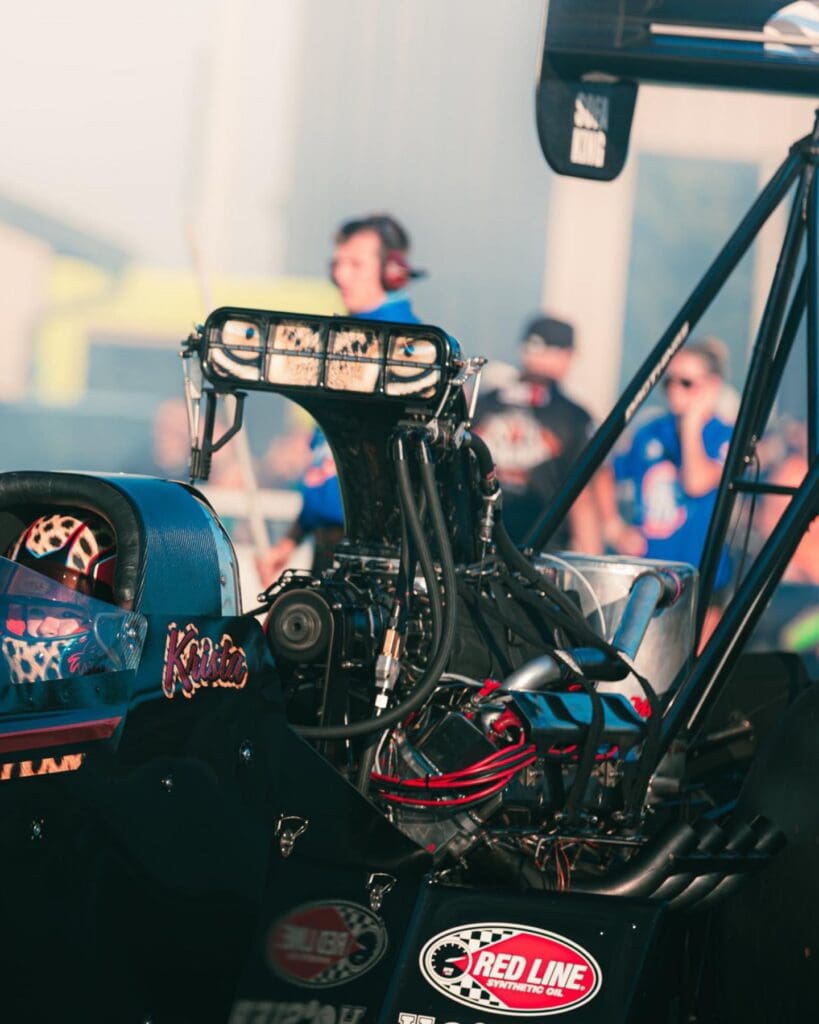
10 – THE COLUMBUS MAGIC FOR BALDWIN – This weekend’s event marked her second race at Darana Raceway in Hebron for the revamped IHRA Outlaw Nitro Series, and Top Fuel driver Krista Baldwin has been on the grounds for both of them.
“I’m pretty excited,” Baldwin said. “I mean, it’s cool that the series is going on and they’re having a lot of success. I think this race has turned out to be pretty good today. So it’s cool.”
Saturday’s program included delays for oil downs, rear-end failures and other mechanical issues. Baldwin said those setbacks did not change her approach heading into eliminations.
“You know, obviously, you can’t help the weather and sometimes there’s oil downs, but all the racers here, we know what’s up and we’re excited to go,” she said.
Baldwin added that running consistently has been a boost for her team. She said more laps equal more data, and the experience will carry forward into next season.
“Yeah, I think so,” Baldwin said. “I mean, it just, you know, it’s tuning for a different track prep, and that’s the big thing. So the more we run on these kinds of tracks, the more we’re going to have more data and the better we can come out next year.”
She entered race day after posting a 3.877 in the first qualifying session Friday. The outlook, she said, was positive.
“Oh, yeah, super hopeful,” Baldwin said. “I mean, now that the sun’s peaking out a little bit, it’ll warm the track up just a little bit, so it’ll make it a smidgen easier for us. Now we’re looking to make another mid-80 run and hopefully put Lex (Joon) on the trailer.”
In the opening round, Baldwin delivered on that plan. She ran a 3.953 to eliminate Joon, who posted a 4.046.
10B – MISSING IN ACTION – The last time the IHRA raced at Durana Raceway, Scott Palmer [Top Fuel] and Mike McIntyre [Funny Car] won from the No. 1 qualiying position. This time, both were absent from Saturday’s eliminations. Unfortunately for them, they were on the DNQ list.
QUALIFYING NOTEBOOK – IT’S A VETERANS PARTY ON FRIDAY NIGHT IN COLUMBUS
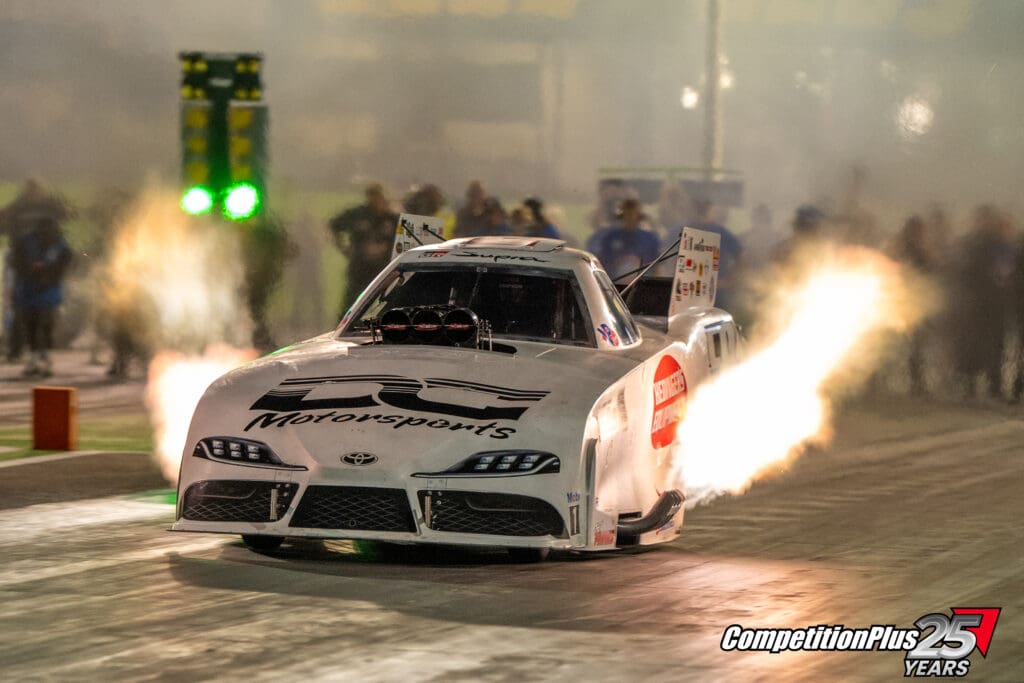
1- WORSHAM DRIVES TO NO. 1 – Del Worsham claimed the top spot in Nitro Funny Car qualifying Friday at Darana Raceway, running 4.094 seconds at 302.62 mph. The pass gave him both low elapsed time and top speed of the session as he heads into eliminations against Jody Austin on Saturday.
Worsham, the most recent IHRA event winner at the event in Milan, said the opening round gave his team exactly what it needed.
“We definitely did. The first run was a great run,” Worsham said. “I was kind of bummed … I really, really, really want to make a three-second run for everybody here. And every chance I get, like in Milan, I push it and try, and then it just keeps fighting back a little bit.”
He noted that the atmosphere at the Columbus facility only added to the challenge of pushing for that barrier. With strong fields in both dragster and Funny Car, Worsham said the competition is only improving.
“There’s a lot of great competitors here,” he said. “There’s a lot of funny cars, a lot of dragsters. And tomorrow’s going to be a really cool day of racing.”
The California native admitted that nerves played a role in his IHRA return earlier this season. That first event, he said, left him wondering if he could still perform at a high level.
“I came in here, that first race in Columbus, and hadn’t driven in a long time. And I was a little gun-shy,” Worsham said. “You always question how good you can do it or whether or not you can do it like you did it before. Coming in here, I’m not going to say it’s back to my most comfortable level of my life, but I feel pretty good in the car right now.”
Track conditions, Worsham explained, have evolved since that debut. The surface on Friday provided more grip and opportunity to push harder.
“It didn’t rain as much, and there’s more rubber, more glue, more prep,” he said. “I believe there’s enough traction and teeth out there for us to run better than 4.09, and we were pushing pretty hard there too. We’ll just have to wait until tomorrow to do it.”
The two-round qualifying format, he added, increases the pressure to perform early.
“When your first run’s a pretty good run like we did, that takes a lot of pressure off,” Worsham said. “But only having two qualifying runs … it puts a lot of pressure on the team and the driver to make sure that you go out and do a good job and you don’t make mistakes.”
Worsham said he still enjoys entertaining fans with burnouts and old-school flair. He also pointed out that balancing his role as a driver and tuner is second nature after decades in the sport.
“From a young age, we didn’t really have a crew chief, we couldn’t afford one, so I had to learn very young how to tune these cars and work on them,” Worsham said. “It doesn’t really affect me. I don’t really notice that.”
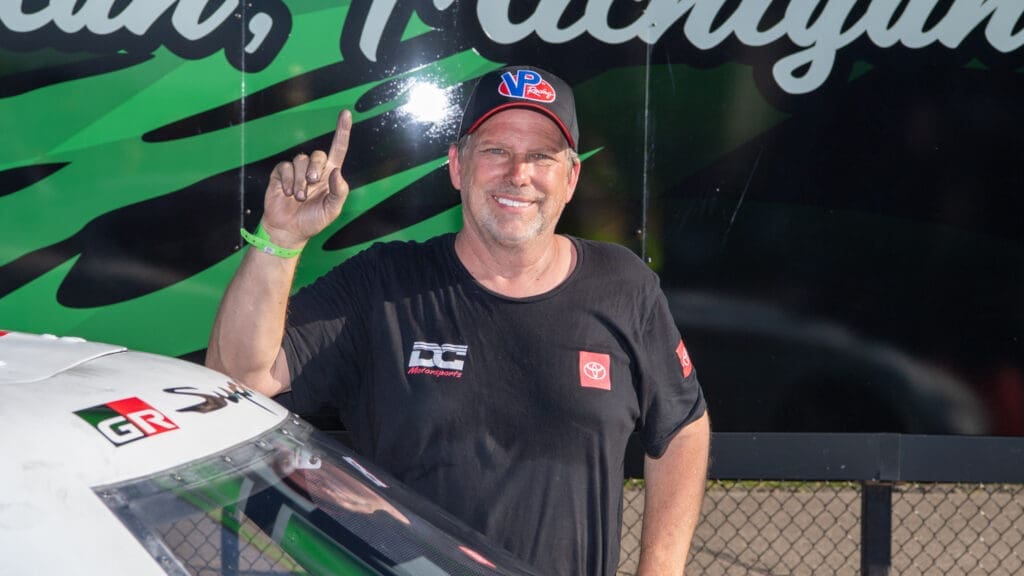
2- WORSHAM’S EXCELLENT ADVENTURE – Worsham has never hidden his love of drag racing, and the rejuvenated International Hot Rod Association has given him another way to stay competitive. The veteran nitro driver has reached the finals twice this season in IHRA competition, winning once, and said the series provides an economical alternative to racing Top Fuel and Funny Car.
For Worsham, the appeal goes beyond trophies. He said IHRA’s structure reminds him of an earlier era in drag racing.
“It just seems to bring back and have a little bit of a feeling of like maybe back like ’70s and ’80s kind of racing, where the rules maybe are a little bit more open and you get a bigger variety of cars,” Worsham said. “It’s not the same bunch of cars from every race. So you get different guys coming from different places and trying it out.”
Worsham has long felt comfortable racing in IHRA, dating back to his family’s Alcohol Funny Car days in the late 1980s.
“I always felt at home at IHRA, whether we were at Darlington in the ’80s, or the early ’90s of me driving, or Columbus today,” he said. “I just like the feeling when you come here, it just gives me an older feeling of drag racing.”
Though he lives in California, Worsham keeps his operation in Indiana to be closer to the majority of events. That central base makes racing more manageable.
“I might live in California, but everything lives out of Indiana just because that’s where all the racing is,” he said. “So really all these trips are four or five hours. They’re easy to get to. They’re close. Great bunch of guys.”
IHRA currently has no championship points fund, but Worsham said the absence of standings does not lessen the intensity.
“If there’s a points fund right now, I’ll probably be pretty excited about it,” he said. “But either way, for Darryl to get these five races together and get the thing up off the ground, I think he’s done a great job. It’s been amazing.”
He also praised the atmosphere, noting that financial concerns have not dominated conversations.
“It’s probably the first time in 20 or 30 years I’ve been to a drag race where the racer, the track people, the track owner, the spectators, nobody’s complaining about money,” Worsham said. “I haven’t heard a damn word about money. And that’s pretty nice.”
Looking ahead, Worsham said he does not see a battle between sanctioning bodies. Instead, he views more opportunities as better for racers.
“I hope not. No, I don’t think so. Unless somebody’s making one out of it,” he said. “There’s options now. And there’s going to be more options as time goes on.”
In recent weeks, Worsham has balanced a busy schedule across multiple cars and events.
“Heck, I raced Pittsburgh a few weeks ago. Cordova, a week before Indy ran. Indy with Julie driving. And here we’re back in Columbus this week,” he said. “So I’ve been in a Top Fuel car four weeks ago. I raced Cordova in a Funny Car two weeks ago. Watched my car race a week ago, and I’m driving again here this week. So I’m pretty much living my dream.”
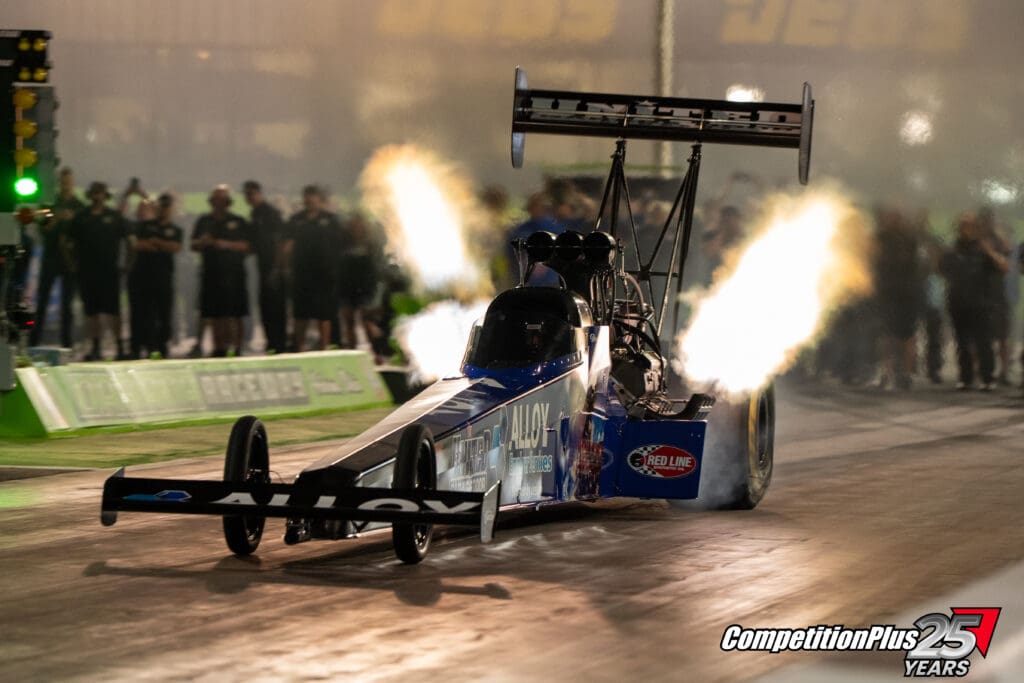
3- FOLEY RIDES WITH MORALE BOOST – Doug Foley earned the No. 1 qualifying spot in Top Fuel Friday night at the IHRA Outlaw Nitro Series at Darana Raceway. Foley covered the 1,000-foot distance in 3.805 seconds to edge IHRA newcomer Jasmine Salinas, who ran 3.844. He will face Larry Dixon Jr. in the opening round on Saturday.
The veteran racer said the path to the top wasn’t without setbacks. A mechanical failure in the opening round left his team scrambling to regroup, but they rebounded when it mattered.
“We had confidence that we could do well,” Foley said. “We had a mechanical failure first round and I apologized to anybody that I messed the track up on for quite a while, but we just had to forget about it. We know we’re a good team, we know we’re capable.”
Foley said running well in Columbus carried extra meaning for his sponsors. Alloy Employer Services and United Garage Door are both headquartered locally, and he said their presence added pressure but also motivation.
“This is their hometown,” he said. “So they love me racing here, I love racing here. And a number one sure doesn’t hurt.”
The performance also marked his first No. 1 in years, dating back to a San Antonio Raceway-hosted IHRA Texas Nationals, which was shortened to an eighth-mile event in 2007 when parts of the shutdown area became compromised. He said the accomplishment underscored what IHRA’s revival under owner Darryl Cuttell has meant for part-time and mid-level teams.
“A lot of people don’t understand that we put the same effort in that the Kalittas do and all these other great teams,” Foley said. “But we don’t get the notoriety, we don’t get the ability to run for points. Darryl is giving these smaller teams, and even medium-sized teams, the opportunity to feel like first, that they’re appreciated. Secondly, that their competition matters.”
Foley said the IHRA schedule allows teams like his to compete without the demands of a full-time budget.
“You can come here with a reasonable budget, be competitive. The fans appreciate it. They come in the pit area. It’s just a totally different feeling,” he said.
He also predicted larger fields in the future, with bigger teams possibly entering to test while independents battle for wins.
He acknowledged that the morale boost has been significant, especially for crews who balance racing with day jobs.
“These guys work their butts off, and they all have day jobs. This is not full-time, everybody comes to the shop. And they need that momentum. They need to feel gratified and feel like they’re important,” Foley said.
Looking ahead, Foley said a win would carry personal meaning after years without a trophy.
“It would be great,” he said. “I’ve been back for five years now. We’ve gone to two final rounds, but we haven’t won a trophy. And to be able to do that and take it to another level…”
Foley closed by reflecting on the perspective racing gives him amid personal challenges around him.
“We love the sport, and it’s a lot of families that get to travel,” he said. “But when you’re here at the track, you have to take things in perspective. You’re extremely lucky to be here. My best friend’s wife is literally not doing well. Cancer sucks and we just appreciate every day.”
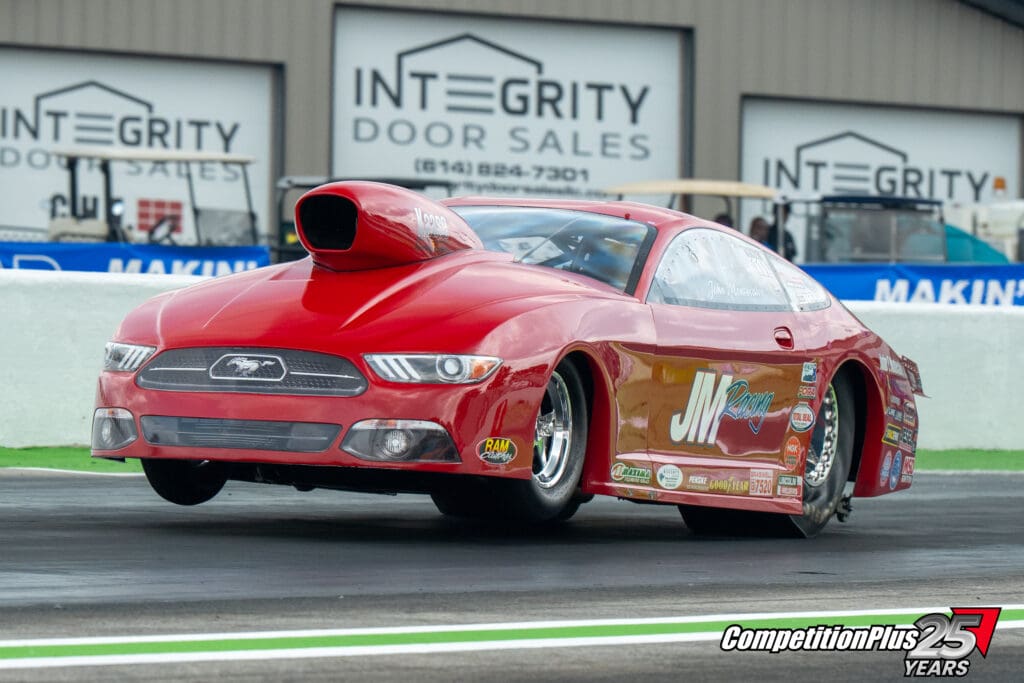
4- MONTECALVO SETS A RECORD PACE – John Montecalvo has seen plenty of success at National Trail Raceway over the years, but his return to the facility brought something new. The longtime Mountain Motor Pro Stock racer not only secured the No. 1 qualifying spot Friday night at the IHRA Outlaw Nitro Series event, but he did it with a series world-record run of 4.056 seconds at 176.82 mph.
Montecalvo said the performance was better than anything he and his team anticipated going into the second session. The group entered the round expecting something in the 4.08 or 4.09 range, but a late call from his crew chief changed the plan.
“We made a pretty good lap on the first one and the second one, quite honestly, we were looking to go like an eight or a nine,” Montecalvo said. “Never dreamed we could go a five out there, but at the last second, my crew chief Lump, he turned it up and he definitely made the right call. New world record, by the way.”
The result also carried a sense of familiarity for Montecalvo, who has long used the track outside Columbus as a showcase. He said the facility has been good to him in the past, though a decade had passed since his last big moment there.
“It feels great,” he said. “We’ve qualified number one here in the past quite a bit. We broke a lot of records here, but obviously there’s been a dry spell the past 10 years and we are just overjoyed to be back here again.”
Looking ahead to eliminations, Montecalvo said his plan is to start cautiously and then increase the aggression if the car responds. He knows the field will only get tougher as the day goes on, and his strategy reflects that reality.
“Tomorrow we’ll probably go out first round a little bit on a conservative side, but as the rounds go on, we’re going to kick it up because of course it’s going to get tougher and tougher,” he said. “So, tomorrow it’s anybody’s game.”
The veteran also acknowledged that part of his motivation comes from unfinished business. Earlier this season he came up short in Milan, a memory that still stings.
“Yeah, no, we definitely have unfinished business,” Montecalvo said. “That was a little bit of a disaster. Actually it was a lot of disaster and on my part because the car was a fast car all weekend. It’s a long story, but it happens.”
Montecalvo has been a fixture in Mountain Motor Pro Stock longer than anyone else currently competing, and he said the class’ staying power has never surprised him. In his view, it remains one of the most accessible categories in professional drag racing.
“It’s a great class,” Montecalvo said. “You go buy your engine, you buy a clutch, you buy a Haas car, you buy a Bickel car … and the rest is up to you. The class is definitely going through revival for a lot of reasons, for what’s happening here with IHRA is number one.”
He expects the numbers to grow significantly in 2026, with competitors from other categories already planning the move. That trend, Montecalvo said, should lead to deeper and more competitive fields across the board.
“I think you’re going to see this class by this time next year, there’s going to be 24, 25 cars showing up at each race,” he said.
The discussion also turned to the eighth-mile format IHRA uses, which differs from the quarter-mile lengths of Montecalvo’s earlier career. He said the shorter distance removes the advantage of top-end horsepower and forces drivers to be sharper at the start.
“The eighth mile is an equalizer,” Montecalvo said. “Personally, I’d like to see a thousand feet. I’d like to see a compromise. But with the eighth mile, you better be on the tree … you’re not running them down on the eighth mile. It’s the equalizer.”
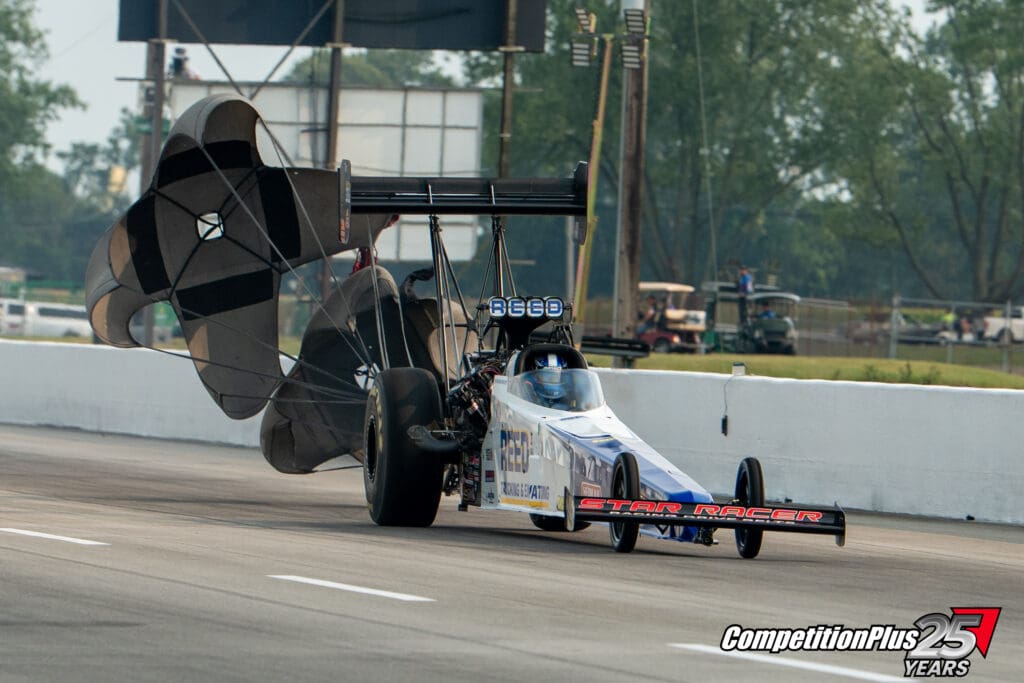
5- MISSION ACCOMPLISHED – Top Fuel driver Shawn Reed made his first pass since a devastating crash nearly two months ago, returning to competition this weekend at the IHRA Outlaw Nitro Nationals in Columbus.
Reed was injured at the NHRA Northwest Nationals in late July when his car blew a tire and struck the retaining wall. His team said Sunday that he suffered two fractured ribs and severe injuries to his left hand, resulting in the loss of his left pointer finger and requiring a pin in his thumb.
He sat out three NHRA events following the accident, with Jordan Vandergriff filling in for two races to help keep Reed’s team qualified for the Countdown to the Championship. Now, the Washington native is using the IHRA event as a proving ground to determine if he can compete in Reading, Pennsylvania next weekend.
Reed wasted no time in showing he could still make a competitive run, posting a 3.854-second pass at 322.81 mph. It was his first lap in seven weeks and came with mixed emotions.
“It felt fast,” Reed said. “I haven’t been in the car in seven weeks, so I told everybody, everybody asked me, am I going to think about the crash? And I said no, I lied. I got in the car and did the burnout and I’m like, oh God, this is going to suck. So I’m glad to get that first one under my belt. The run felt good. Got a little vibrated down there, but I made it through, and heck, it was a pretty good pass, pretty happy.”
The biggest challenge came not from the car but from his recovery. Reed admitted he struggled with basic cockpit adjustments because of his weakened left hand.
“There was some sort of discomfort for sure,” Reed said. “I pulled the chin strap down with my left hand, which I never really realized until I got up there, so I couldn’t get it. I don’t have the strength in my left hand to pull my chin strap down, so I had to take my hand off the brake and pull down with my right hand, and I don’t think that I pulled it down all the way. So I’ll fix that for second round. We’ll be all right.”
Even so, Reed said the speed and rhythm felt familiar. He noted that the car moved around slightly on the top end, but chalked that up to track conditions.
“Yeah, it’s just fast, but everything did all right,” Reed said. “I don’t think I had a bad light. I don’t even really know what my light was, but I felt like I hit the gas on time and I felt like I kept in the groove. Moved around a little bit down on the far end, but I just think that’s the track. Everybody’s moving around when they’re hitting them ETs and speeds, so yeah, we’ll just try to adjust and get another lap tonight and see what happens.”
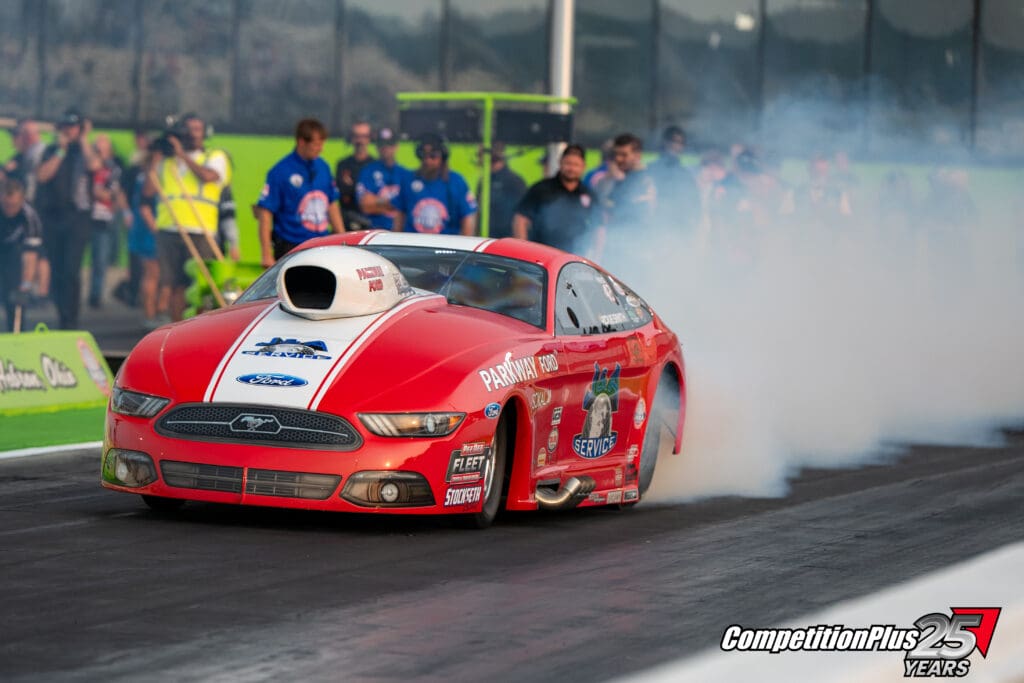
6- YOU CAN ALWAYS COME HOME – Rickie Smith has been an IHRA fixture for more than five decades, and on Friday night he added another chapter to his long career. The North Carolina veteran qualified No. 1 in Pro Nitrous at the IHRA Outlaw Nitro Series stop at Darana Raceway, posting a 3.713-second run at 203.99 mph.
Smith edged out John Vergotz and Tim Molnar for the top spot, returning to a series where he built his reputation beginning in the 1970s. Known for winning so many races in Super Modified that the class was dropped, Smith later claimed five Mountain Motor Pro Stock titles in the 1980s before moving to Pro Modified in 1997. He said his return to IHRA was about more than just competition.
“I wanted to come and support IHRA owner Darryl Cuttell, because he’s done a heck of a job giving us a good place to race, and paying us like what we begged for for 20 years,” Smith said. “So I’m here, and I’ll make all the rest of them.”
The qualifying effort didn’t come easily. Smith said his team struggled in the opening round before rebounding in the second session.
“We missed it first round, and got our stuff together for the second round and ended up number one qualifier,” he said. “But what I’m looking at, three or four of us are all running right there with a couple of hundred. So it’s going to be anybody’s game tomorrow.”
Asked what it would mean to win in his IHRA return, Smith didn’t hesitate.
“Oh, man. If I could come back for the first time to IHRA since, what, ’05 or ’06 and win, it’d be a pretty special deal. A pretty special deal,” he said.
Smith reflected on the path that brought him from Pro Stock to nitrous-powered Pro Modifieds. “No way,” Smith said when asked if he ever imagined it.
“I was a Pro Stock guy. I won five championships in IHRA, and two sportsmen. But the Pro Stock thing got out of hand money-wise, and the nitrous thing come along and they said, ‘It’s a faster car, it’s a meaner car.’ I said, ‘Let me have it.’”
At 71, Smith said his career has exceeded expectations. He has raced for 51 years, with 42 of them as his livelihood.
“It has been a heck of a ride, honey,” Smith said. “I know I’m getting to the point. I’ve been trying to retire, nobody believes it. But Jim Whiteley stepped up. Others stepped up and they just keep this old man out there to keep playing. So I’m going to keep aggravating these guys.”
Smith admitted retirement has never truly been in his heart. The reality, he said, is that sponsorships keep him going.
“I don’t want to retire, but it ends up being money, and this is the way I make a living,” he said. “So if I can’t be competitive and win some races and keep people sponsoring me, I can’t stay out here. So as long as people want to help me, I’m going to keep fighting.”
Through it all, Smith said his longtime crewman has been essential.
“Well, Chad Hester is my main guy. He’s been with me 14, 15 years. He’s my main crew guy. And we’re just a two-man crew,” Smith said. “Everybody else has got three, four or five people, it’s just always been me and Chad for the last 14, 15 years. So we keep fighting it together, honey.”
Smith closed by thanking the organization that helped define his career.
“Thank you, and I thank IHRA for putting this on,” he said.
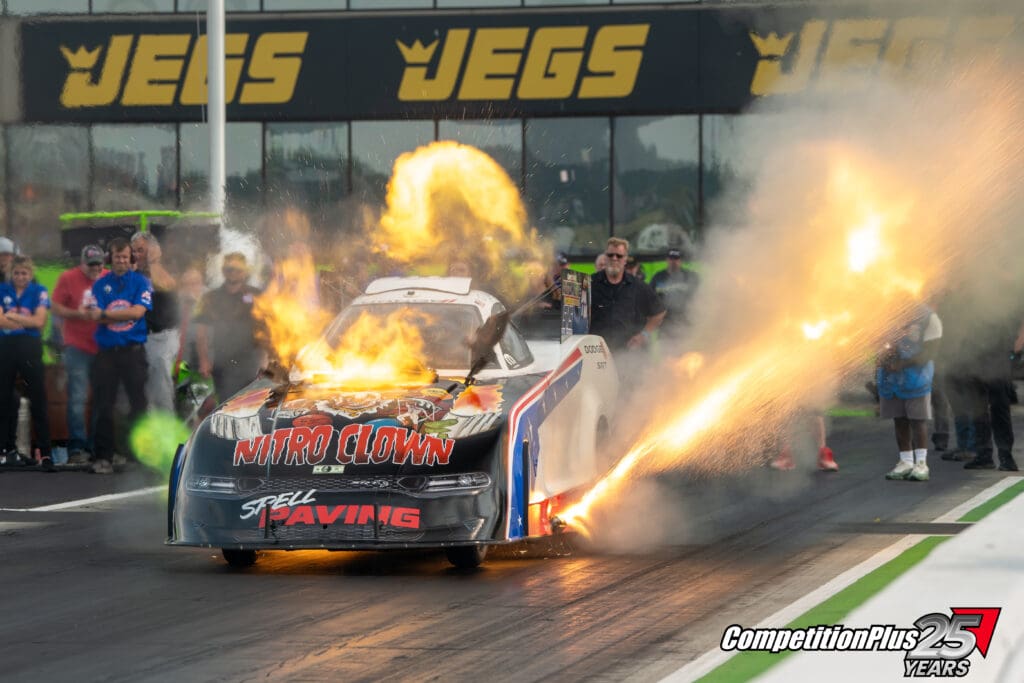
7 – THINGS THAT GO BOOM – Funny Car racer Dave Gallegos got an up close and personal experience just how volatile nitro can be in the Friday Q-1 session.
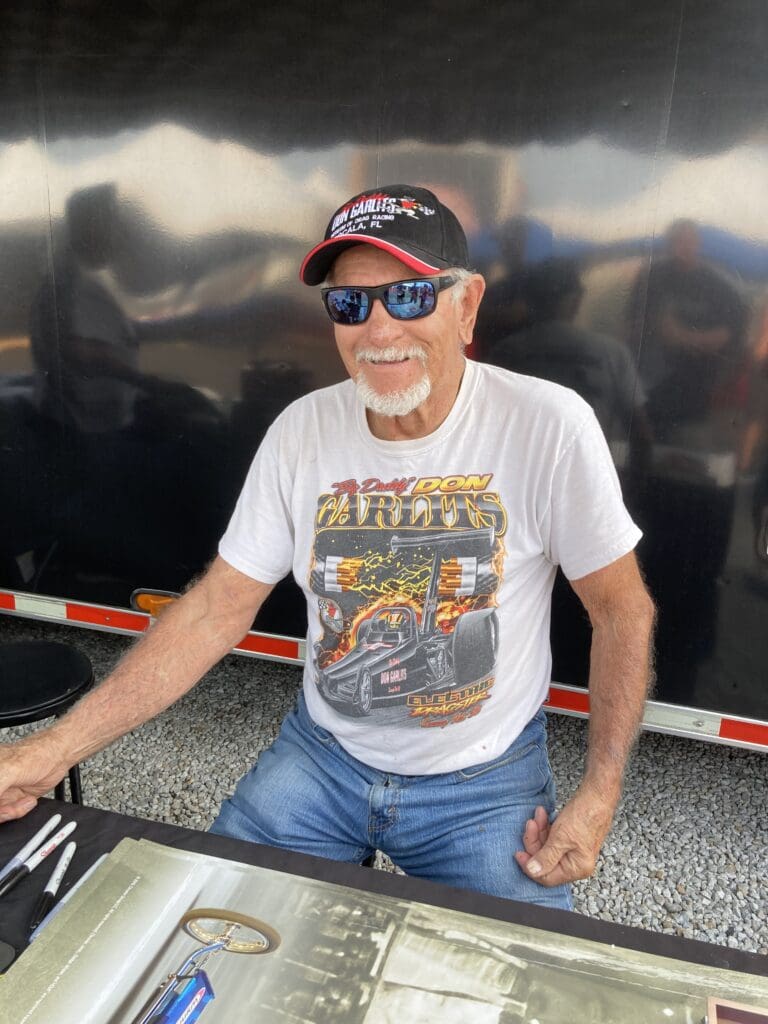
8 – BIG AND THE NATIONAL TRAILS – Few names in drag racing carry as much weight as Don “Big Daddy” Garlits, and few racers have seen more of the sport’s history. From championships to controversies, he has lived through the good, the bad and, on at least one occasion, the absurd at National Trail Raceway.
Appearing as a special guest this weekend at the IHRA Outlaw Nitro Series event, Garlits reflected on his earliest memories of the Hebron, Ohio, track. He said the facility had a colorful past that included one unforgettable night in the mid-1960s.
“Well, it was probably a match race,” Garlits said. “A memory that really sticks in my mind with the early days was a match race in 1965. It was late in the year. I was racing Jim and Allison Lee. I won the race, went three rounds, but I was on the 426 HEMI.”
At the time, Garlits was contracted with Chrysler and obligated to run the newer 426 engine, though he preferred the 392. The results told the story.
“My 392 would run 210 miles an hour, easy, in the sevens,” Garlits said. “I won that race that night … but I only went 192 miles an hour, 8.13 seconds.”
The slower numbers led to a confrontation with the track’s original owner, who was also the event promoter. Garlits recalled being summoned to the tower, expecting $1,250 in winnings.
“He had a $500 pack of money, and he slid it across the table to me and he said, ‘God let you lay down on me tonight,’” Garlits said. “I said, ‘What are you talking about? I made all three runs. I had top time, low ET.’”
The promoter accused him of holding back for another race and refused to pay.
“He said, ‘I advertised 200 on my advertising. You only run 192. You made me look like a fool,’” Garlits said. “He had a .45 caliber pistol. He moved it right over, pointed it right at me. He says, ‘Take your $500 and get out here and don’t ever come back.’” Garlits said he did not return to the track until the owner passed away and his son took over.
The Florida racer also remembered the historic 1976 NHRA Spring Nationals held at the same track, where he faced a familiar rival.
“Shirley Muldowney beat me in one of the early rounds,” he said. “And she went on to win the race. It was her first national event win, was right here. And she beat me to get there, and I won’t ever forget that.”
For Garlits, those moments are part of drag racing’s larger story. He said the lessons are what matter most.
“That’s the way history is,” Garlits said. “You got to go along with the good and the bad. Whatever you don’t like, it’s too bad, it was there. But you learn from all that stuff. That’s the main thing. You don’t get all tore up about it. You just use that as an experience to do better in the future.”
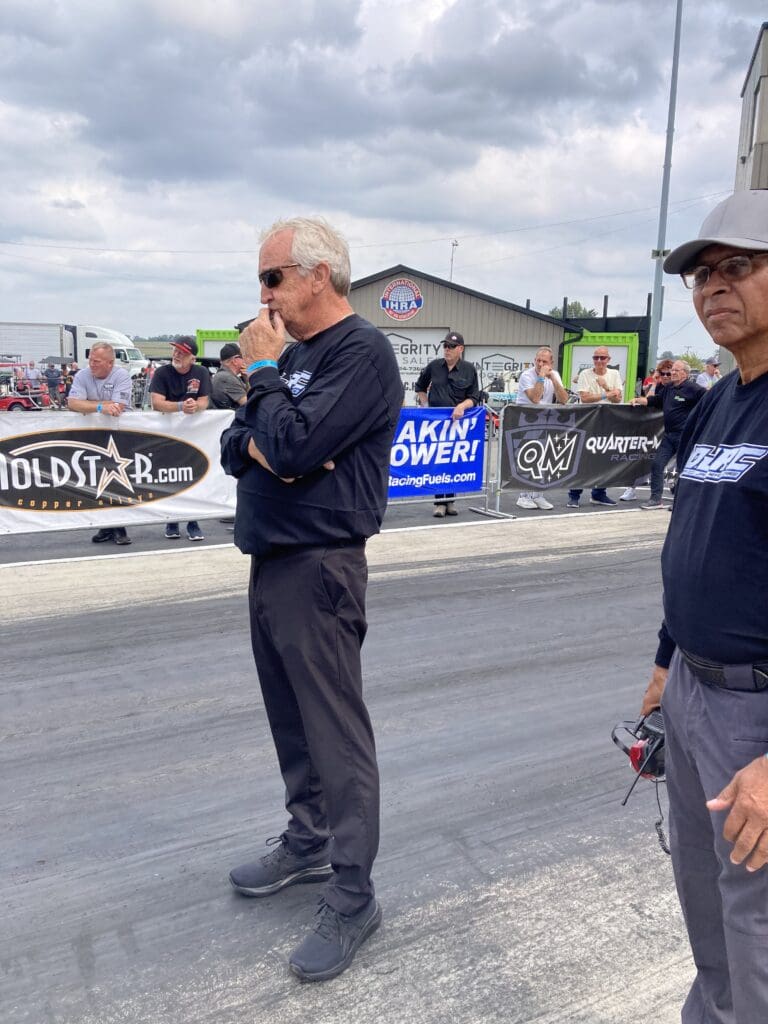
9- THE ICEMAN RETURNETH – The return of the International Hot Rod Association has brought some of the sport’s most decorated figures back to the track. This weekend, Pro Modified legend Shannon Jenkins stopped by in Columbus to see firsthand how the revival is taking shape.
Jenkins, known as the winningest nitrous racer in IHRA history before the sanctioning body moved away from open competition in 2009, said he was encouraged by what he found. The Alabama driver, who won multiple championships and trailed only Scotty Cannon in overall victories, said the series has already sparked new energy.
“Yeah. Well, it’s so good to see it come back and had a couple of guys needing a lift this weekend,” Jenkins said. “So great opportunity to come back out, look at what’s happening at IHRA.”
Even though he was only a spectator this time, Jenkins admitted it was difficult not to be behind the wheel.
“Kills me. Can’t stand it hardly,” he said. The racer nicknamed “The Iceman” added that he prefers to be both tuner and driver when given the chance. “Well, I like to tune and drive. But anyway.”
The rejuvenated IHRA has put three different Pro Modified classes on its roster, signaling strong interest in the category. Jenkins said that development alone shows how much the class has grown in popularity.
“Well, I mean, it just tells you the excitement of the class, but they’re doing a great job with this deal,” Jenkins said. “And of course everybody, it’s the big talk across town, so I think everybody’s going to follow. I think it’s going to be great. Real great.”
Jenkins admitted he had some hesitation at first, wondering if the relaunch would have staying power. But after seeing the tracks and the investment being made, he said his doubts have faded.
“Well, you always are until you really see the pavement, see the tracks, see the investment that people are making,” Jenkins said. “It all tells a tale that the guy’s very serious about what he’s going to do.”
For a racer who helped shape IHRA’s golden era of Pro Modified, the return of the series represents more than nostalgia. Jenkins said the foundation being laid now could be the start of another long run. “And I think he’ll do just that,” he said.
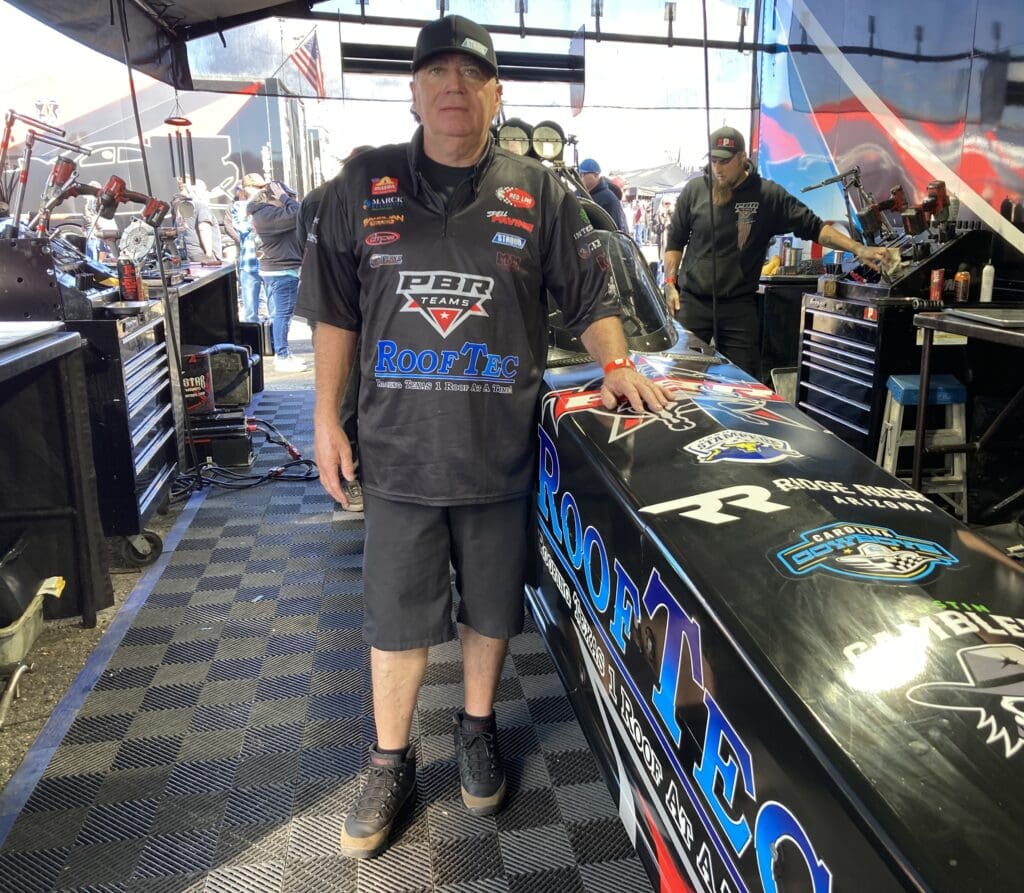
10 – VITAL FOR NITRO TEAMS – Scott Palmer believes the new IHRA Outlaw Nitro Series has created opportunities Top Fuel racing has been missing. He said the additional races not only provide a place to compete but also restore an element of enjoyment to the sport.
Palmer has committed to the five-race schedule this season and said the experience has been rewarding on multiple levels. He pointed to the balance between competition and community as a reason he continues to support the series.
“It’s actually been a really fun experience,” Palmer said. “It’s brought some fun back to Top Fuel racing, which is awesome. And our car runs good enough to run anywhere, so we’re not scared to go anywhere. But I appreciate the effort Darrell’s putting into this. So I want to support it for these five races and come out here and do the best we can.”
The event atmosphere, he explained, has extended beyond the racetrack. With fellow racers and industry partners, Palmer said there have been chances to build relationships that wouldn’t normally happen during a traditional weekend.
“Now we’ve got Shawn Reed making his comeback here, and we went to the PBR Bar last night and met some great people from iHeart Radio and PBR, and just had a great time,” he said.
Palmer also emphasized the series’ importance to part-time operations. He rejects the term “low-budget” because fans see every nitro car as significant, no matter how much money is behind it.
“It’s a great deal for all these part-time teams,” Palmer said. “I don’t call anybody low-budget team, because if you have a Top Fuel car or a not-too-Funny car out here, the people sitting in the stands don’t think you’re low-budget. You have one. So I call it part-time teams.”
The additional track time, Palmer said, is a valuable equalizer. He explained that full-time teams make nearly twice as many runs, leaving smaller teams at a disadvantage.
“Makes these cars go fast is more runs,” he said. “The more runs you make every year, the faster they go. So if you take guys who run 12 times a year and race guys who run 24 or 25 times a year, test and do all the stuff the full-time teams get to do, it’s hard to compete with them. So it kind of levels the playing field.”
That balance carries over into qualifying. Palmer said the two-run format puts pressure on teams to perform quickly but also creates fairness across the board.
“You need to back it down and go down this first run, because you only have one more,” he said. “And then it’s straight to eliminations. We got 13, 14 cars here in each class for a eight-car field. Better get it down the racetrack, and then tonight you can swing for it a little bit.”
While some racers believe participation requires choosing sides between sanctions, Palmer dismissed that notion. He said competing in more than one series only makes teams stronger.
“It’s not like a divorce. This is not divorce court. We’re not having to pick. But it seems like there are some people who are taking it that way,” Palmer said.
Palmer’s only points championship came in a Street Car series at Ozark Raceway Park in 1995, but he said that could change with IHRA’s growth.
“That was in 1995 with a ’67 Camaro with a blown small-block Chevy in it,” he said. “So that’s as close as I’ve come to leading points. And next year this will be a 10, 12-race series. It’ll be for a championship, and I plan to be here and run. I’ll be at both places.”
Looking ahead, Palmer expects to continue splitting time between both series. His focus, however, will remain on supporting promoters who prioritize the racers.
“I’m going to support Darrell as long as he’s supporting the racers, because he’s taking care of people at the bottom,” Palmer said. “No matter how much money you have, if you pay more at the bottom, you’ll get more racers.”





